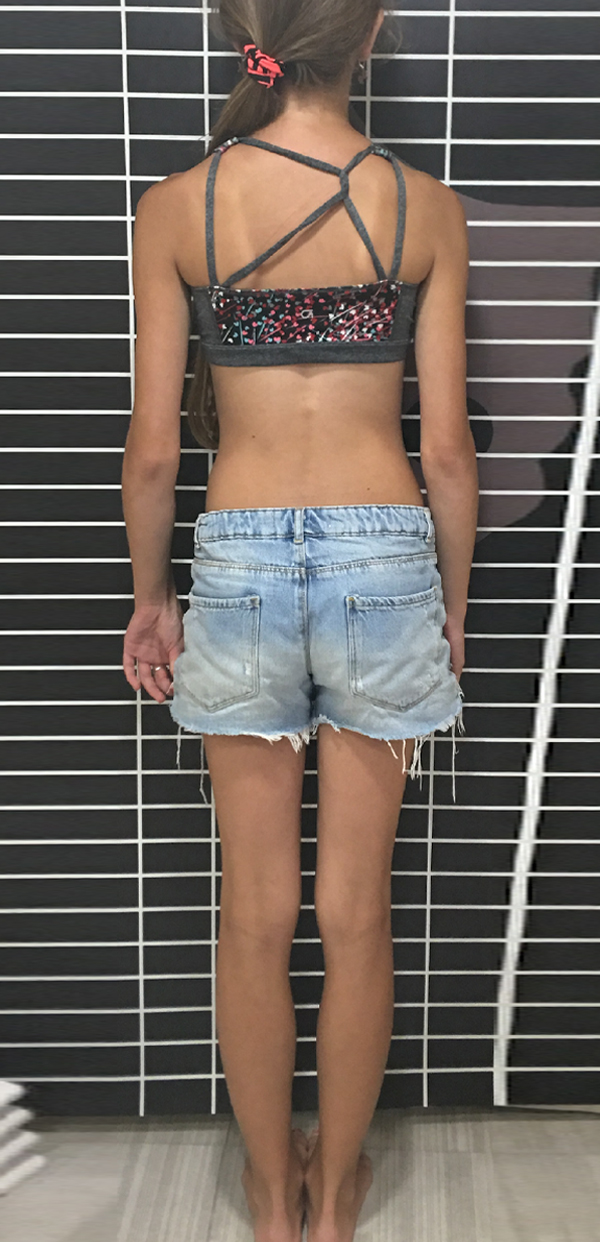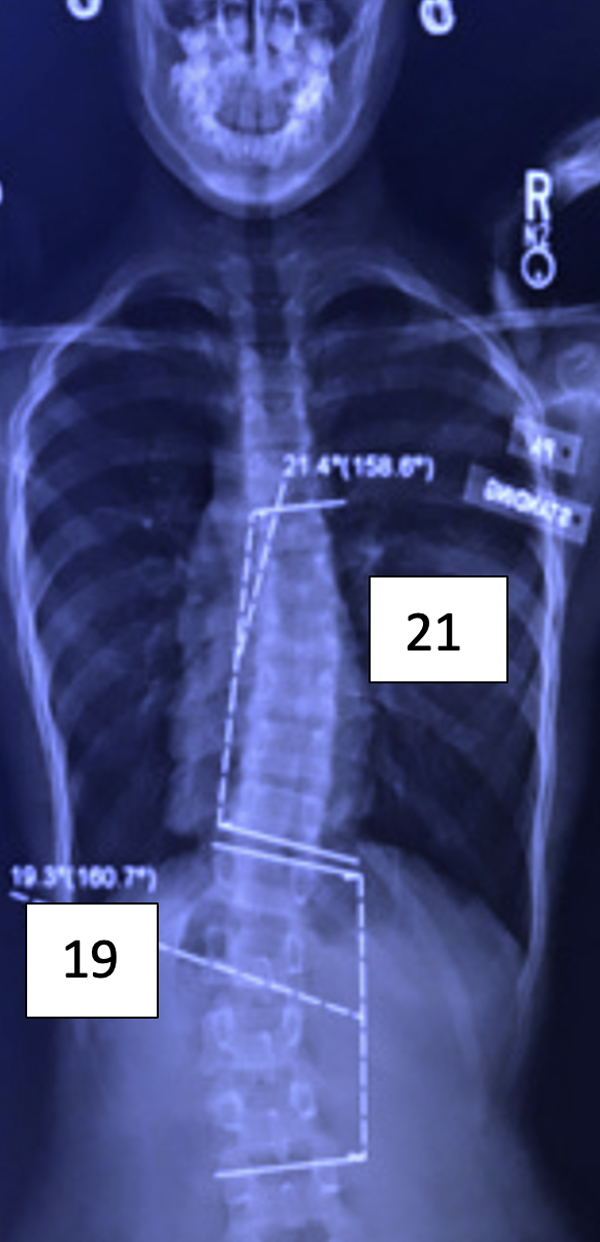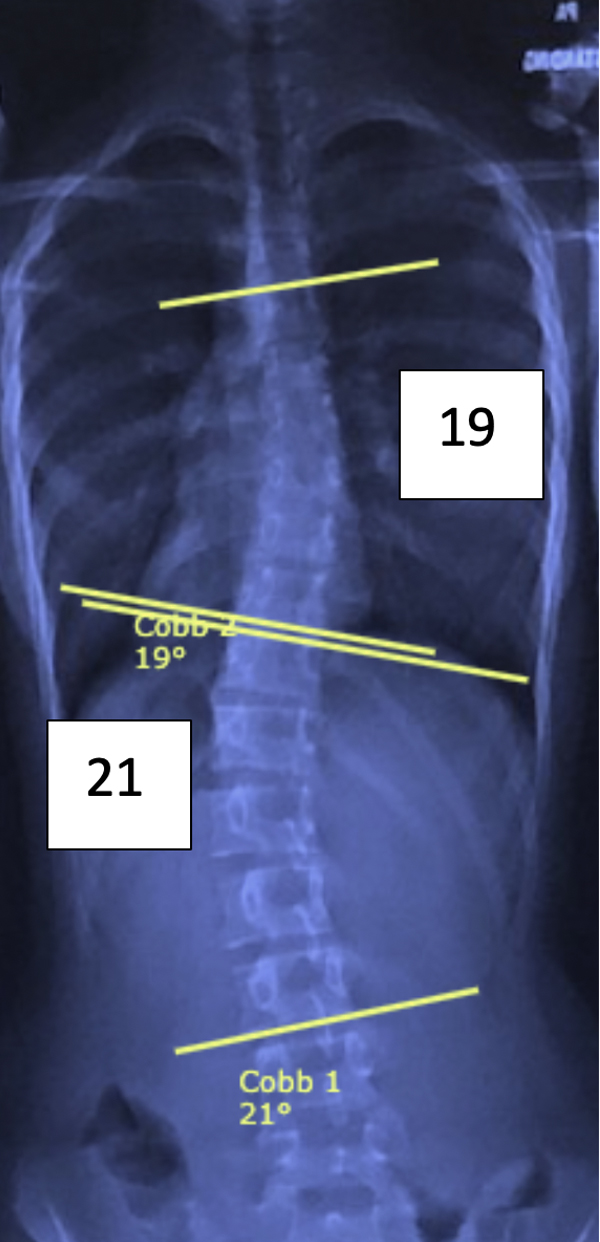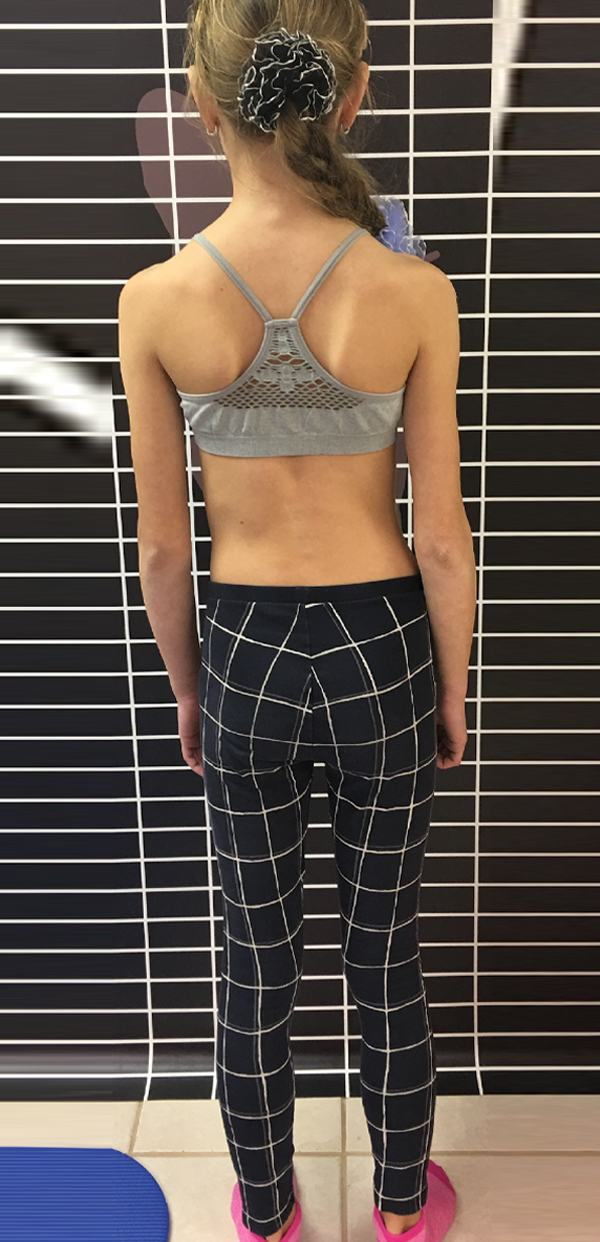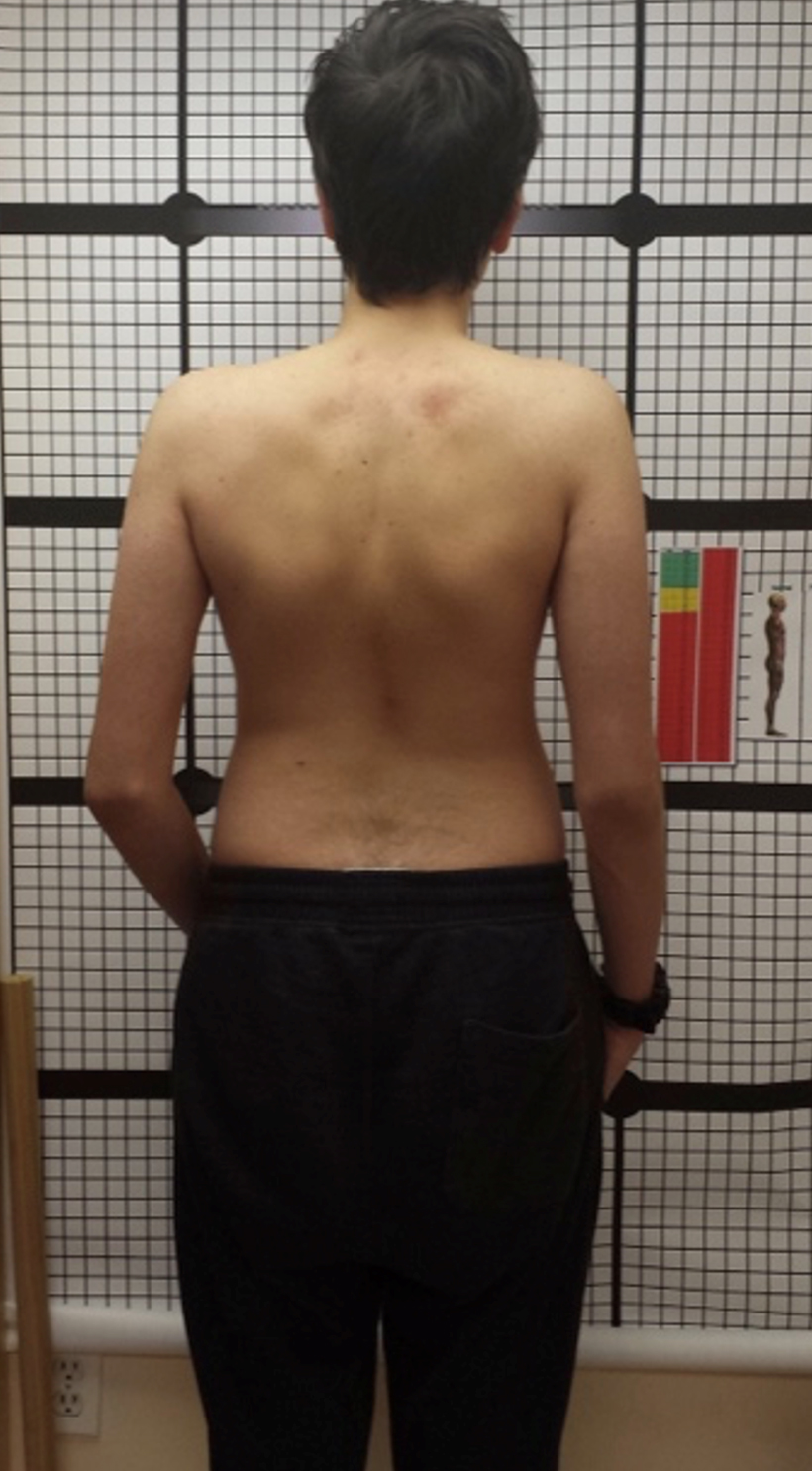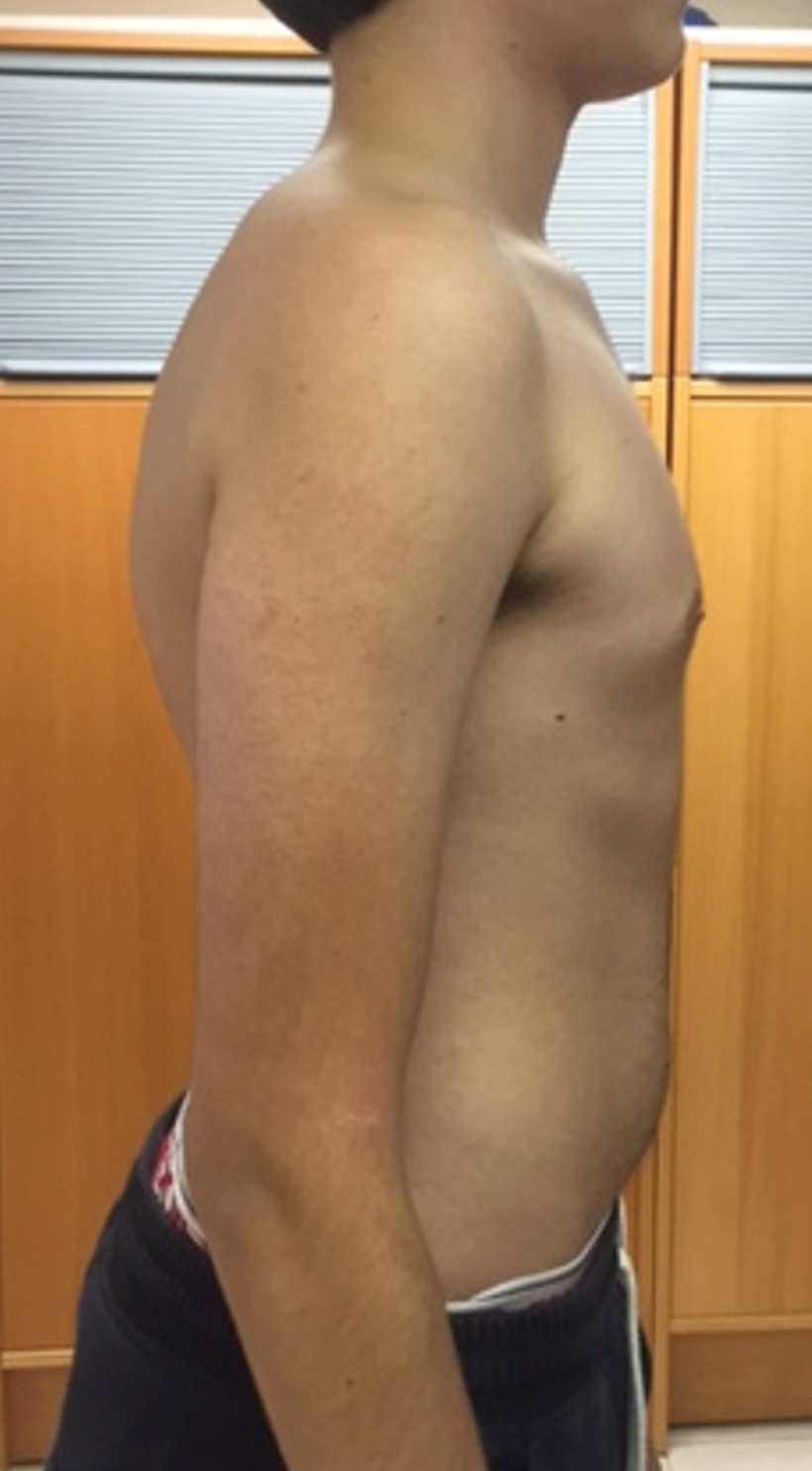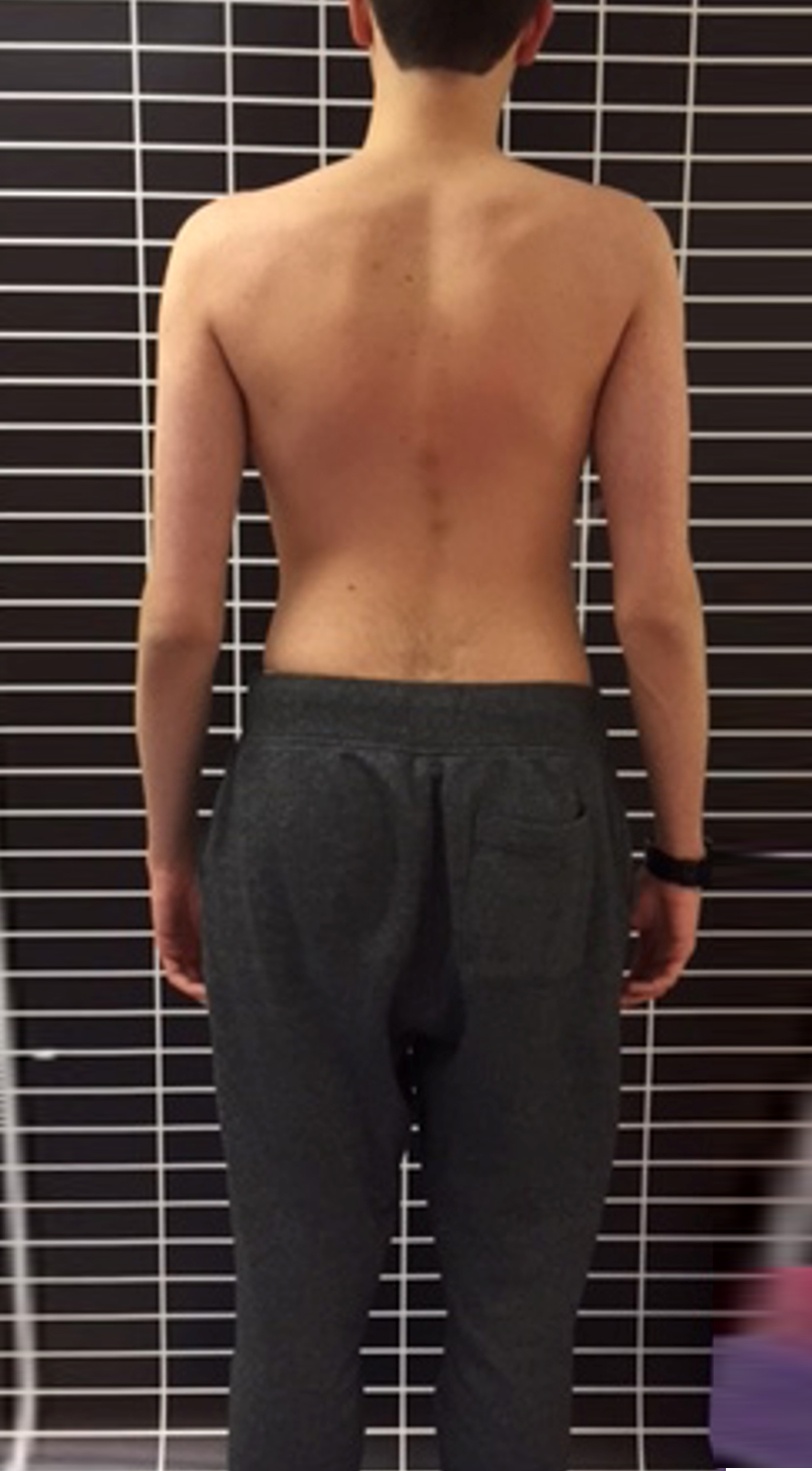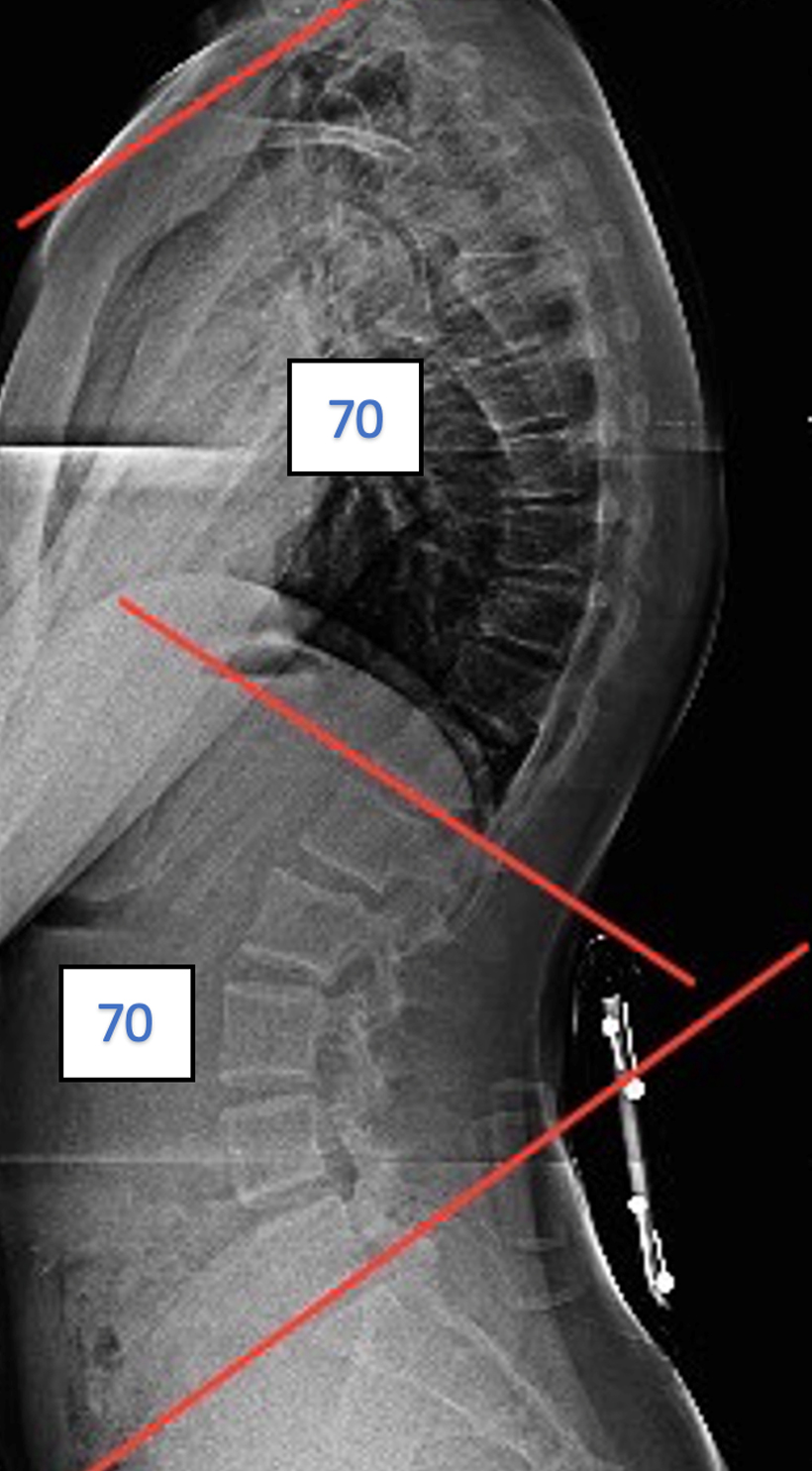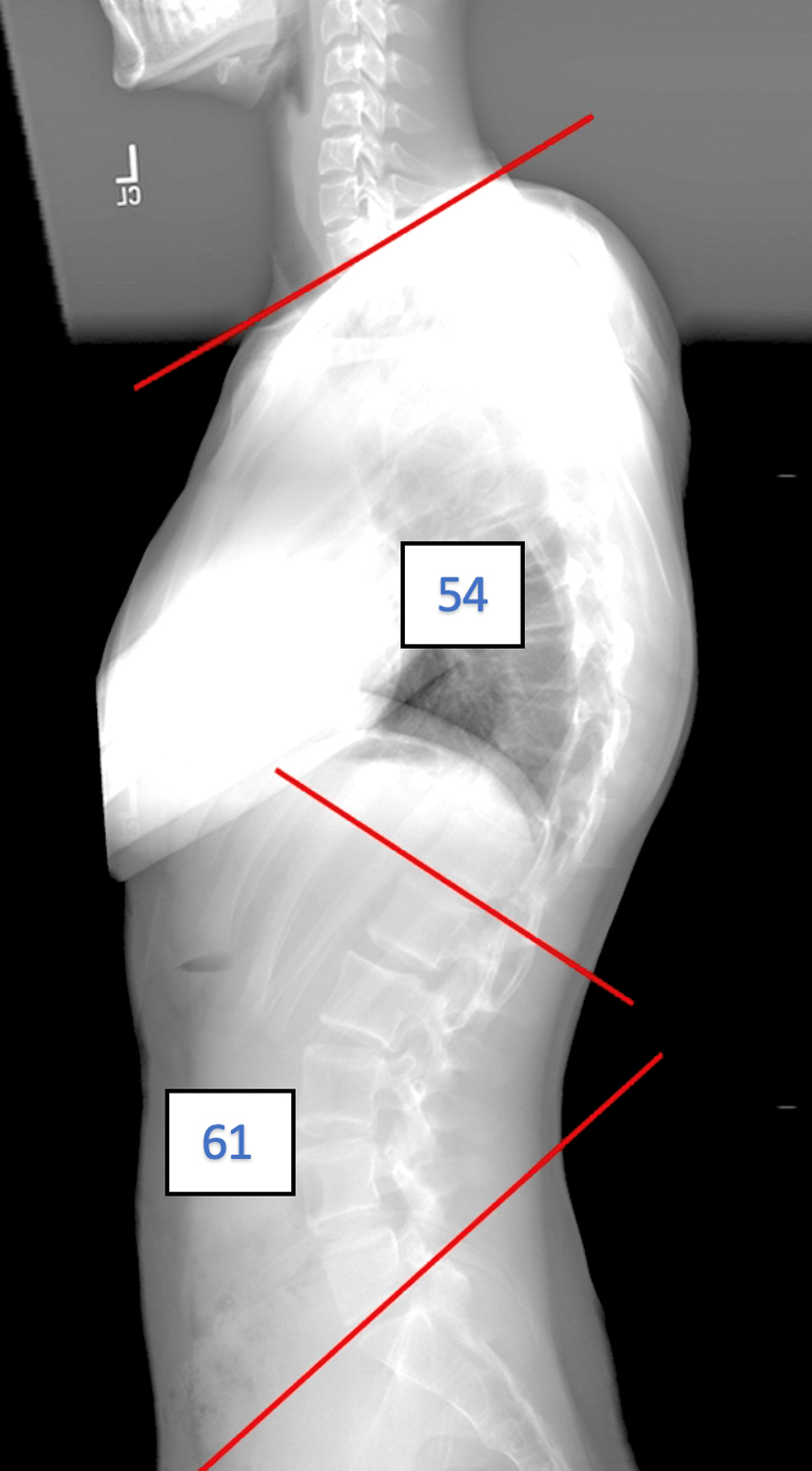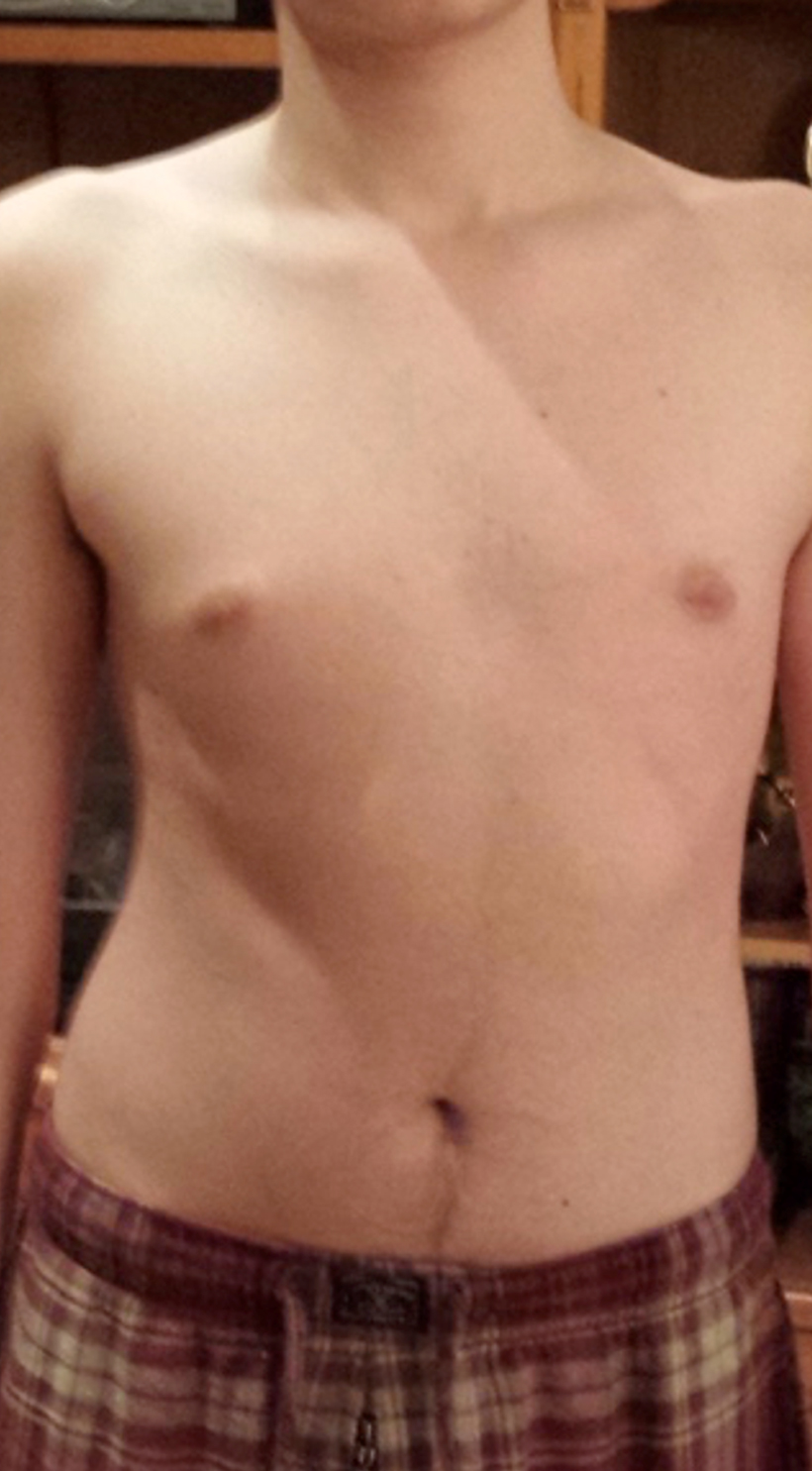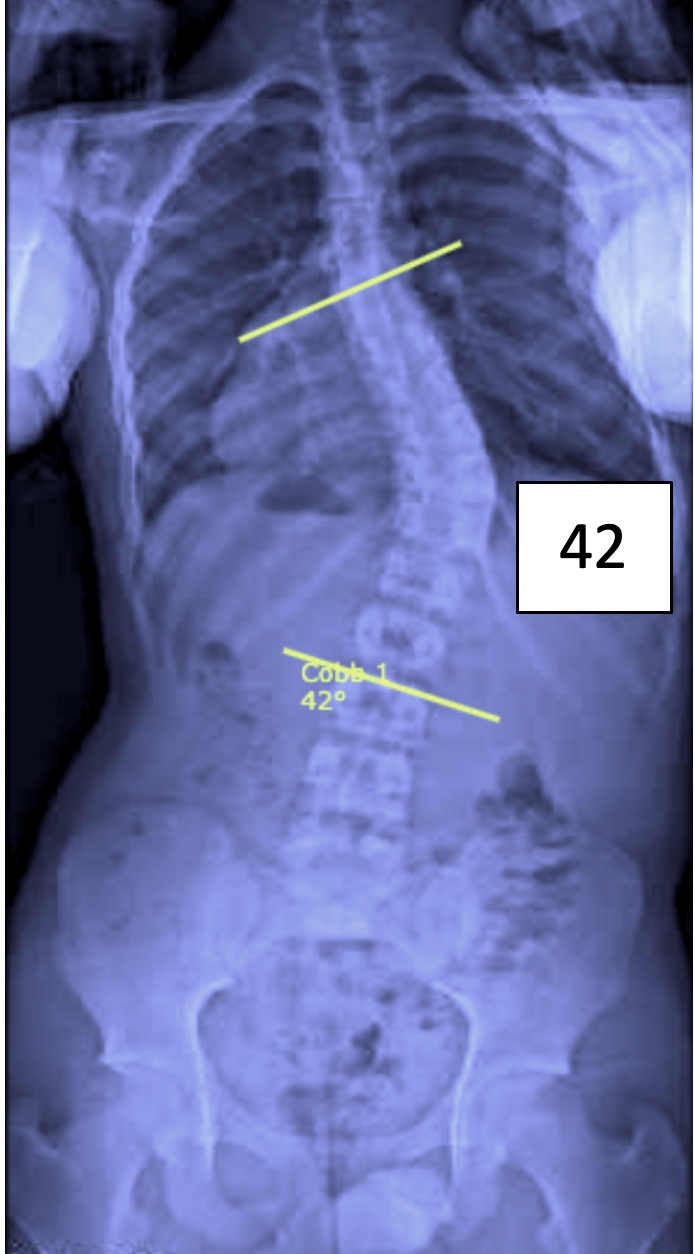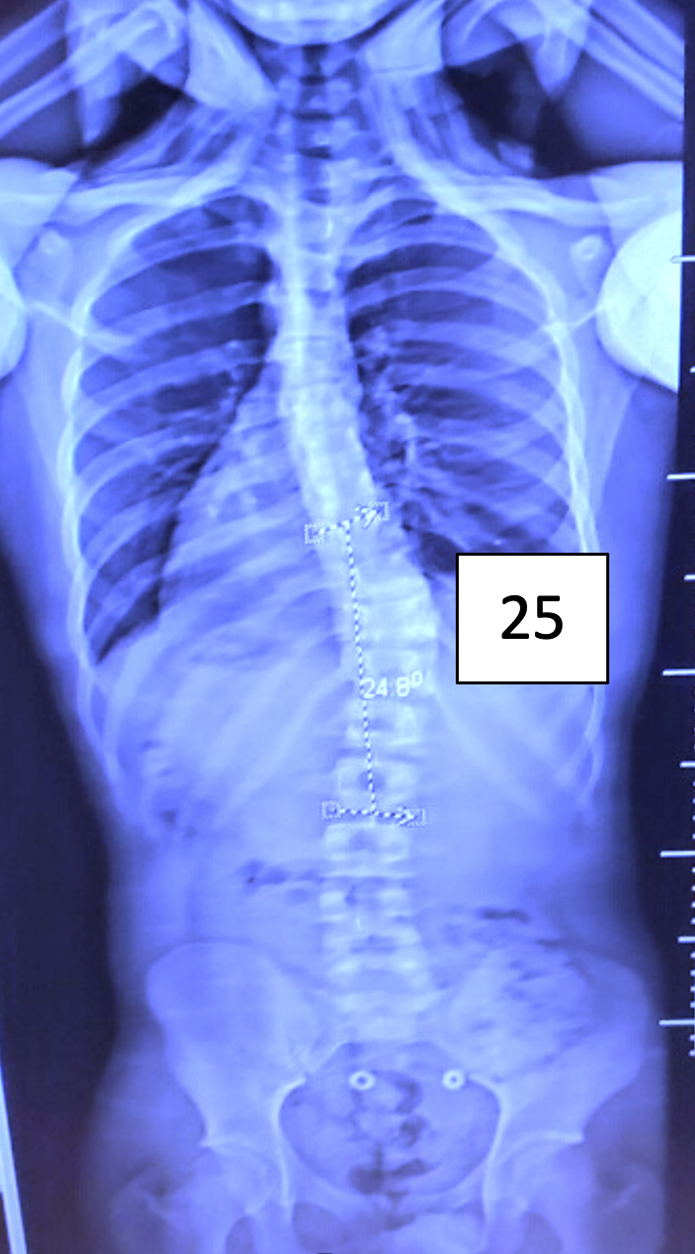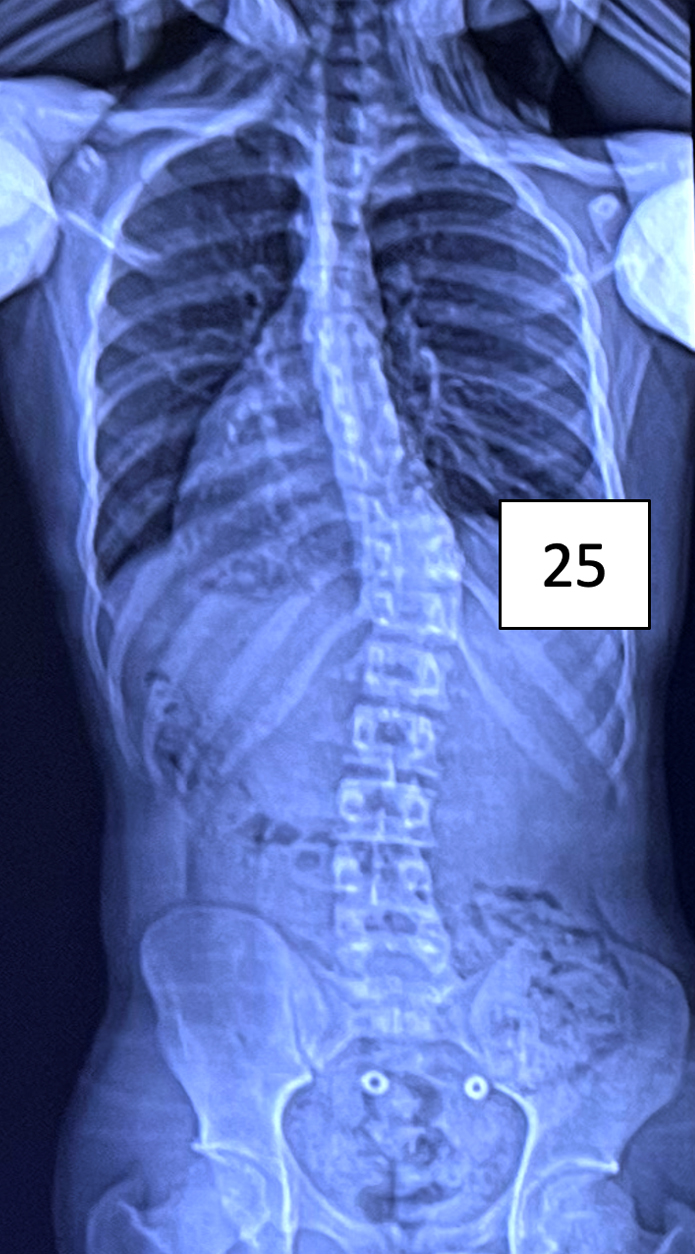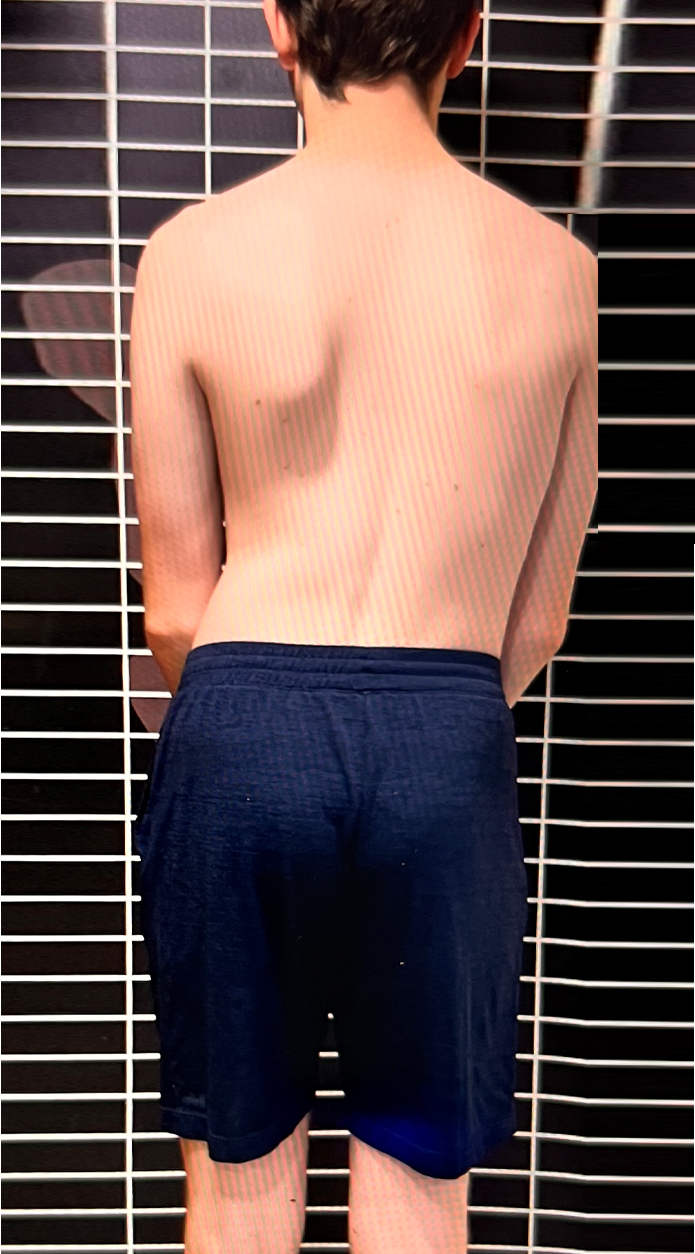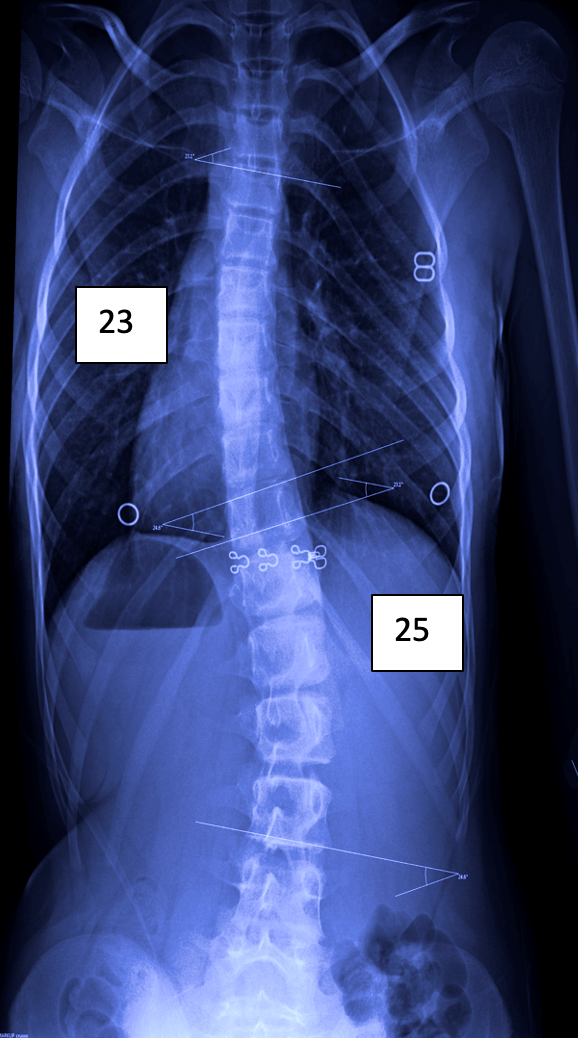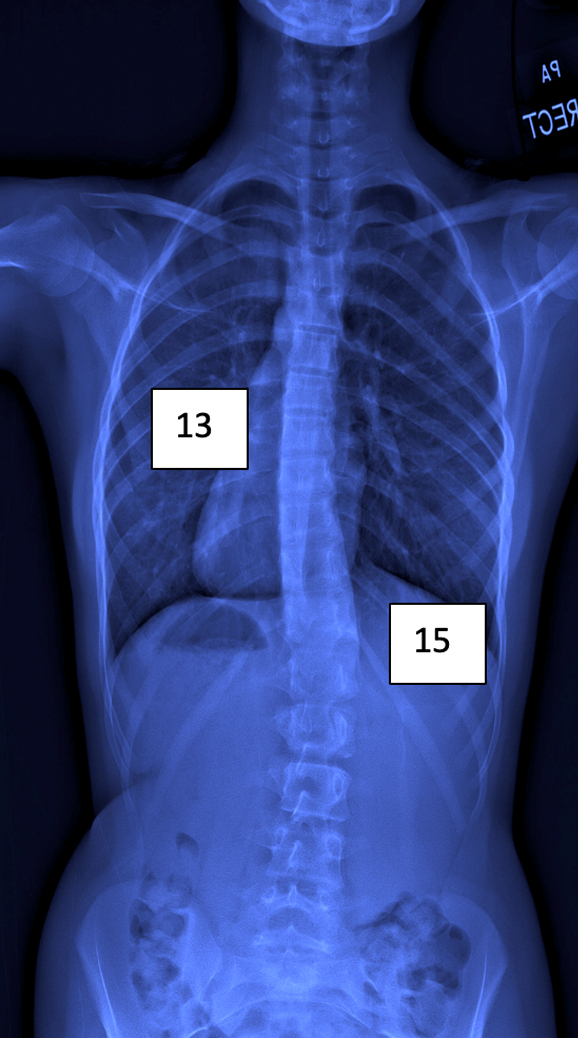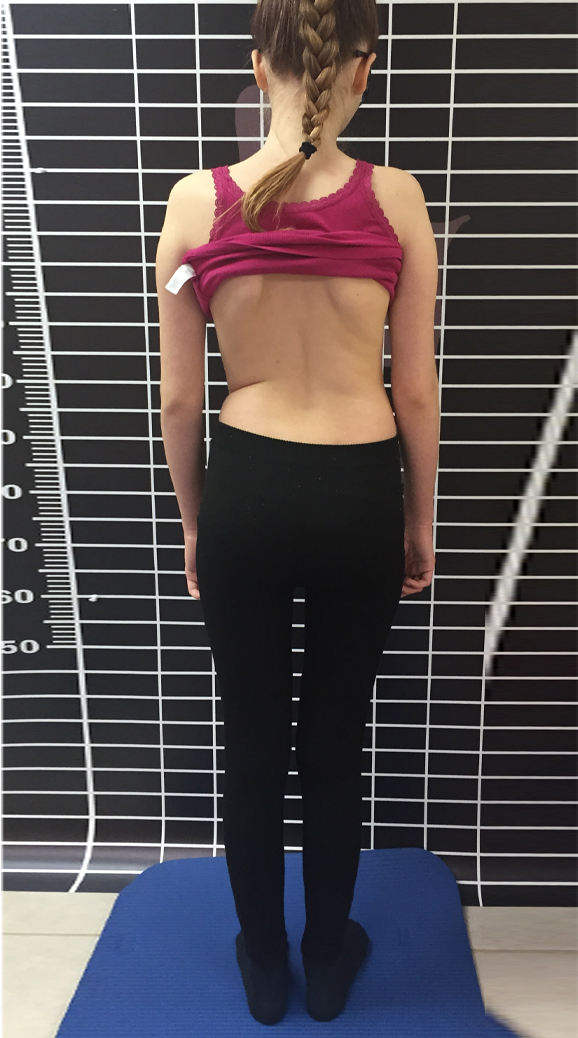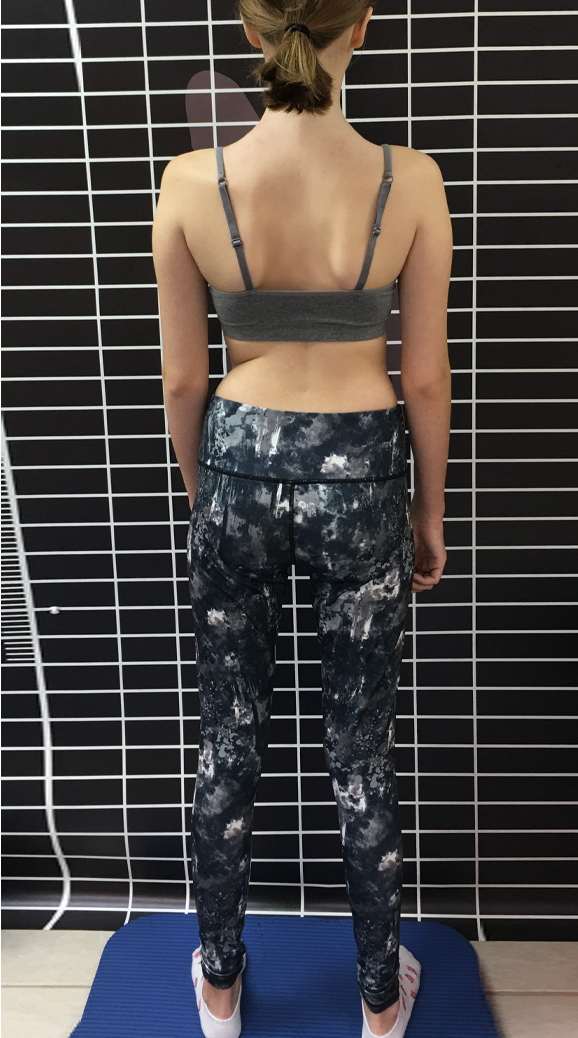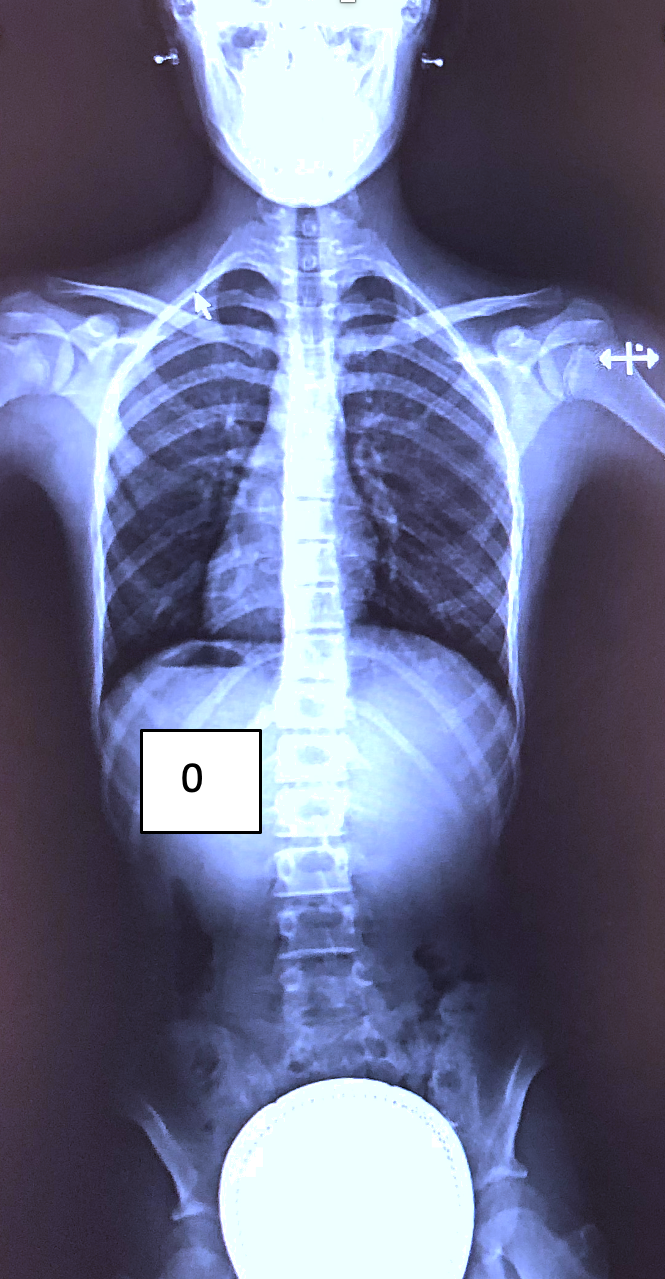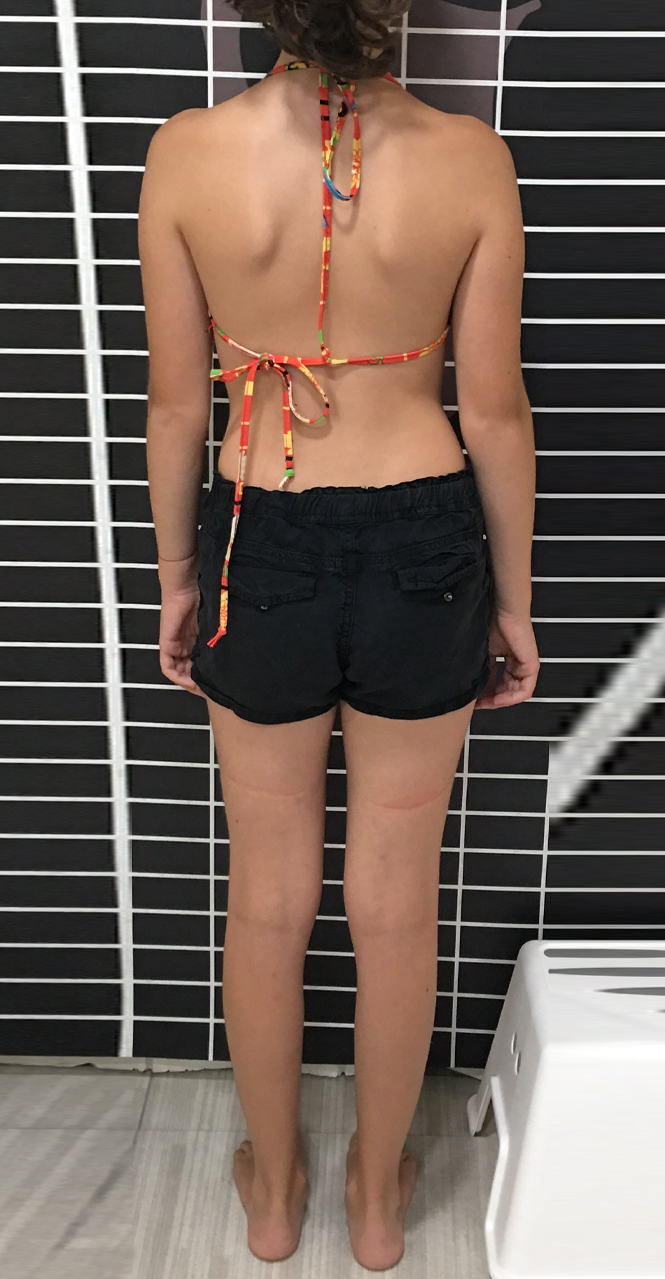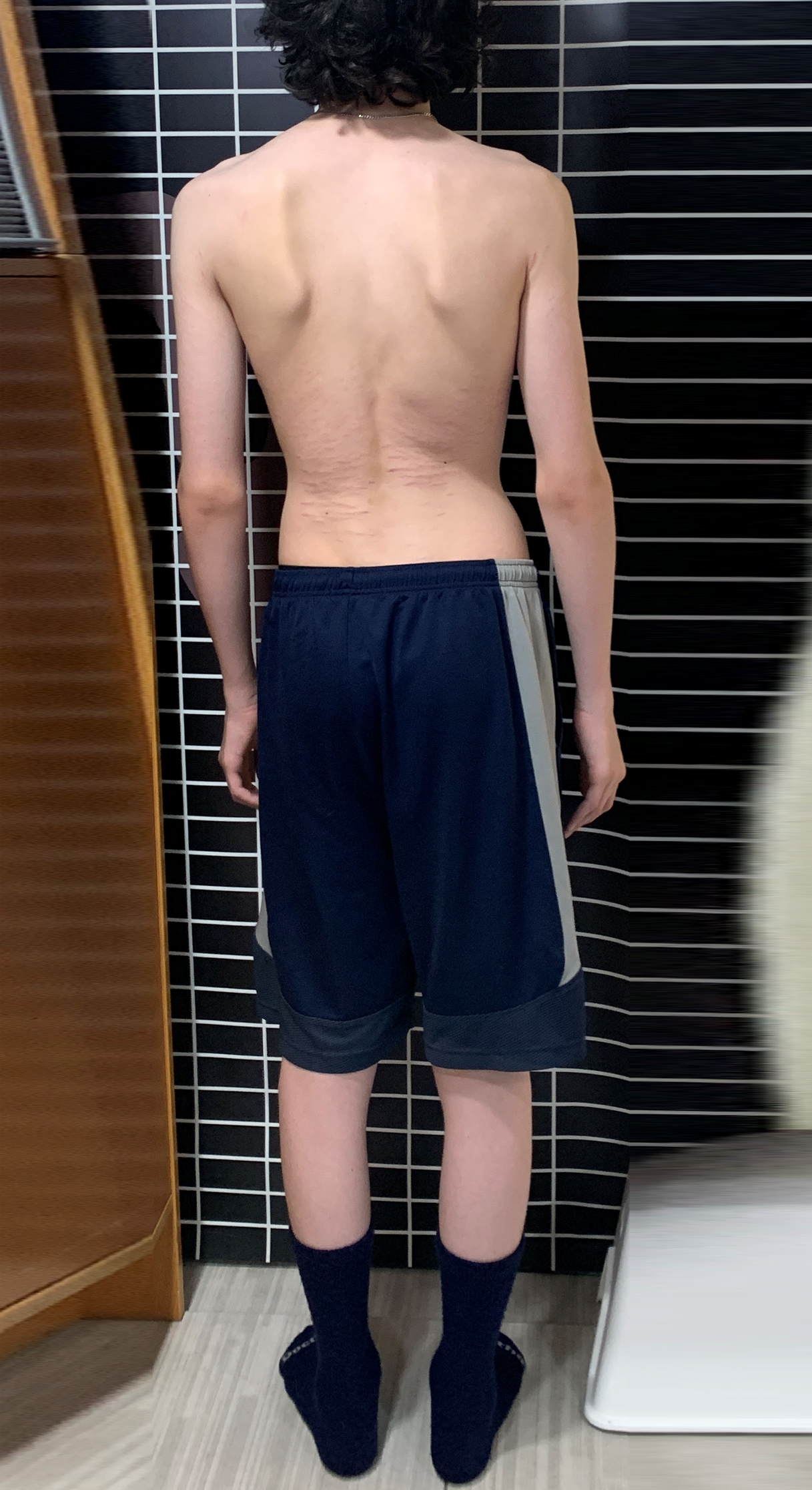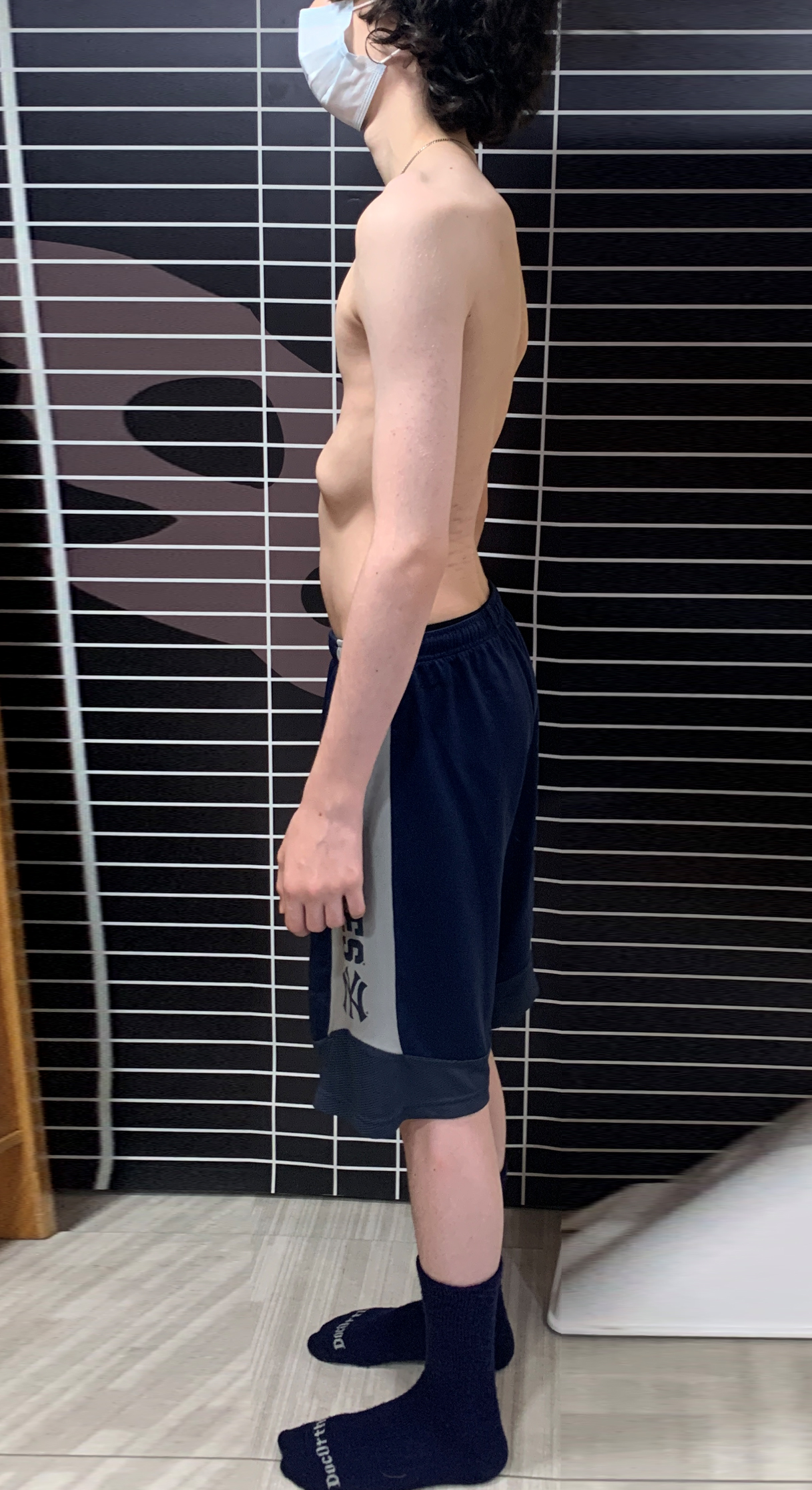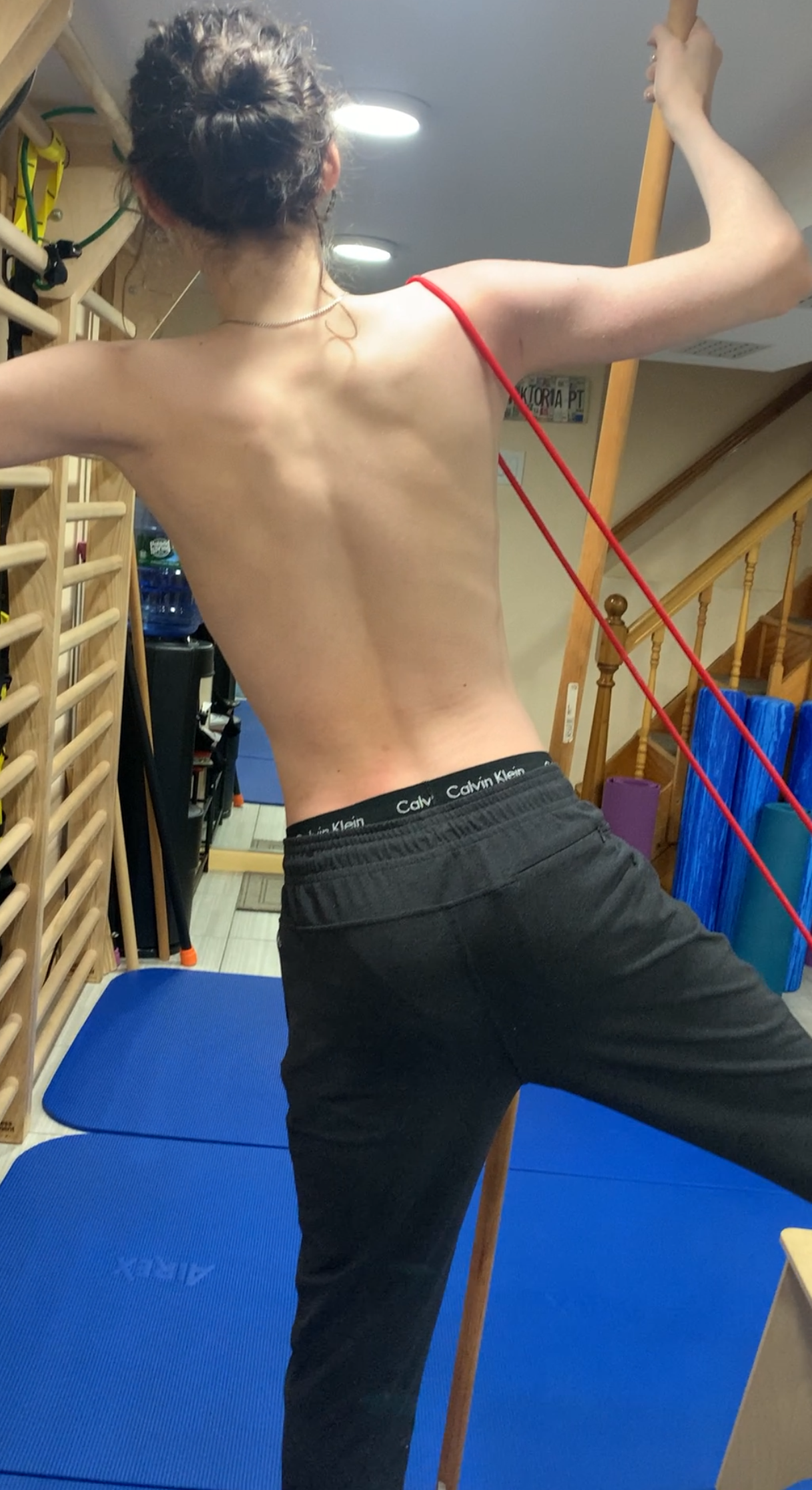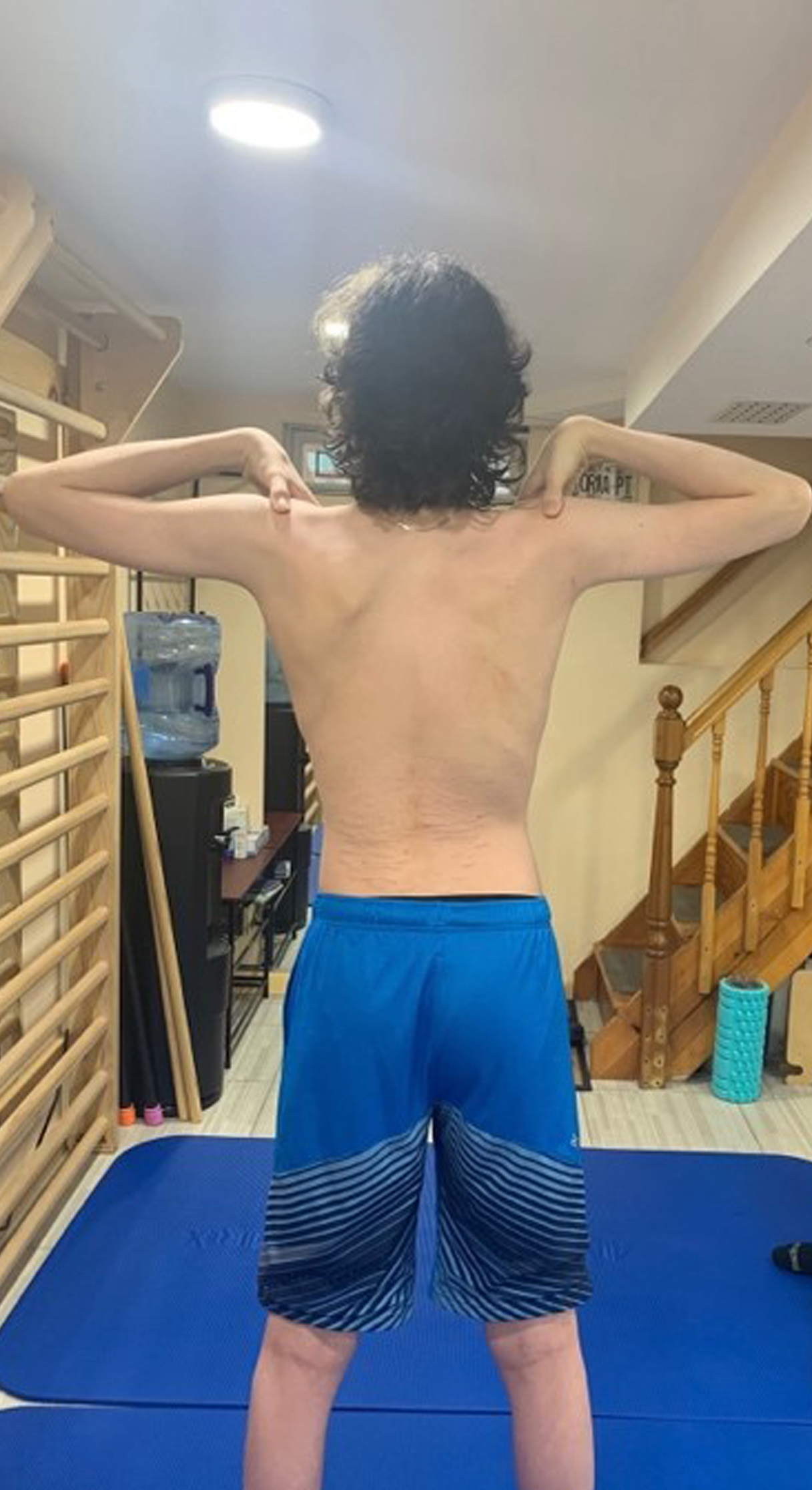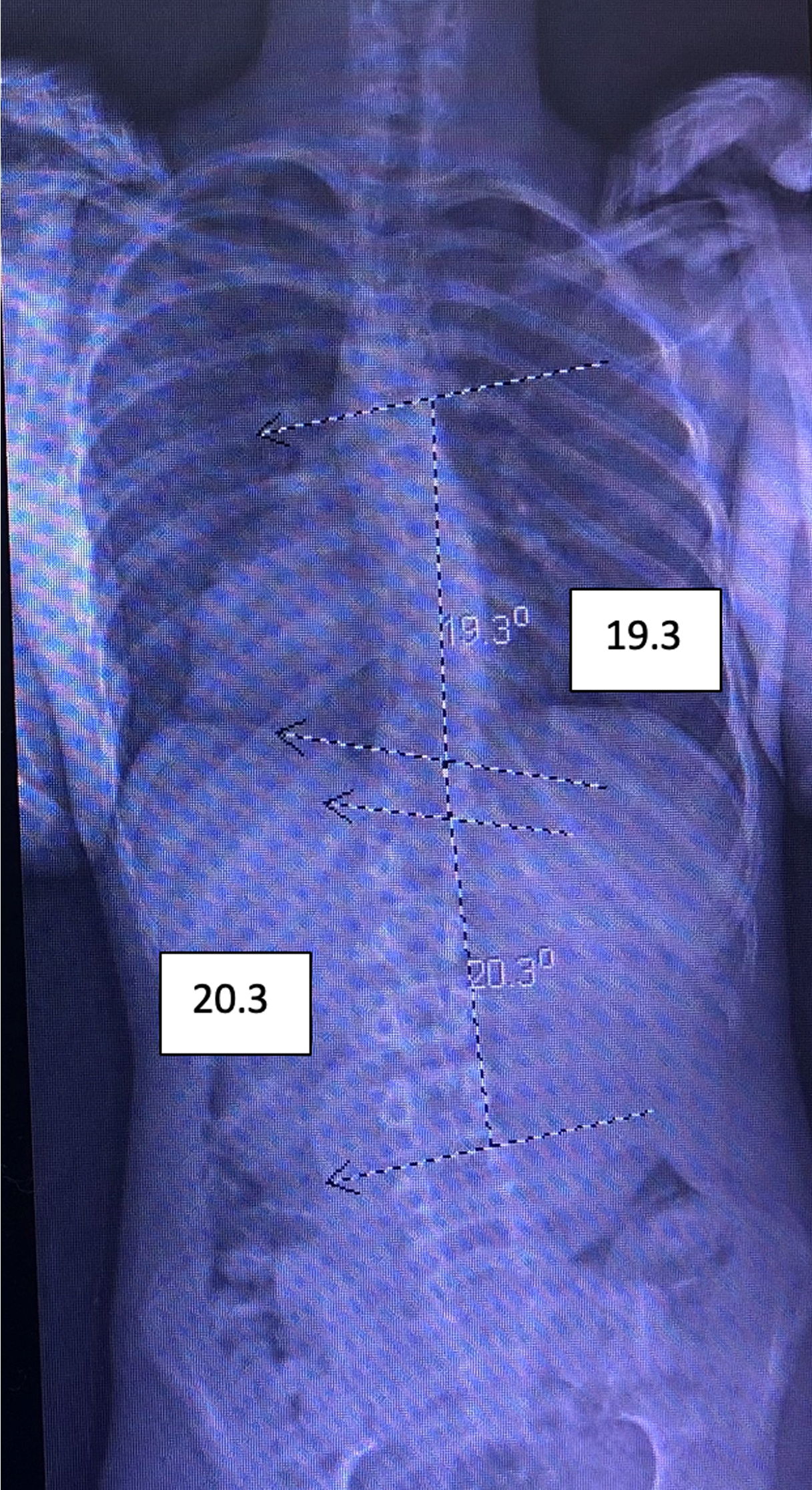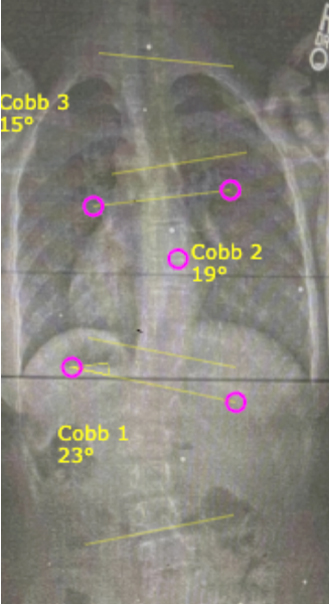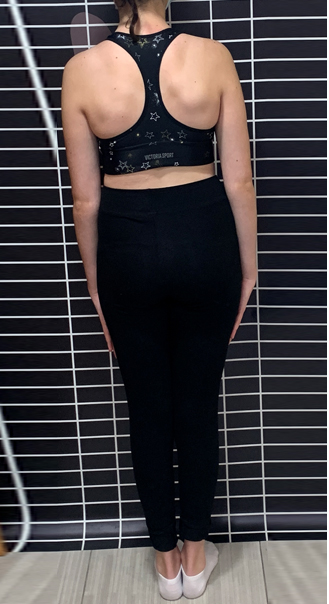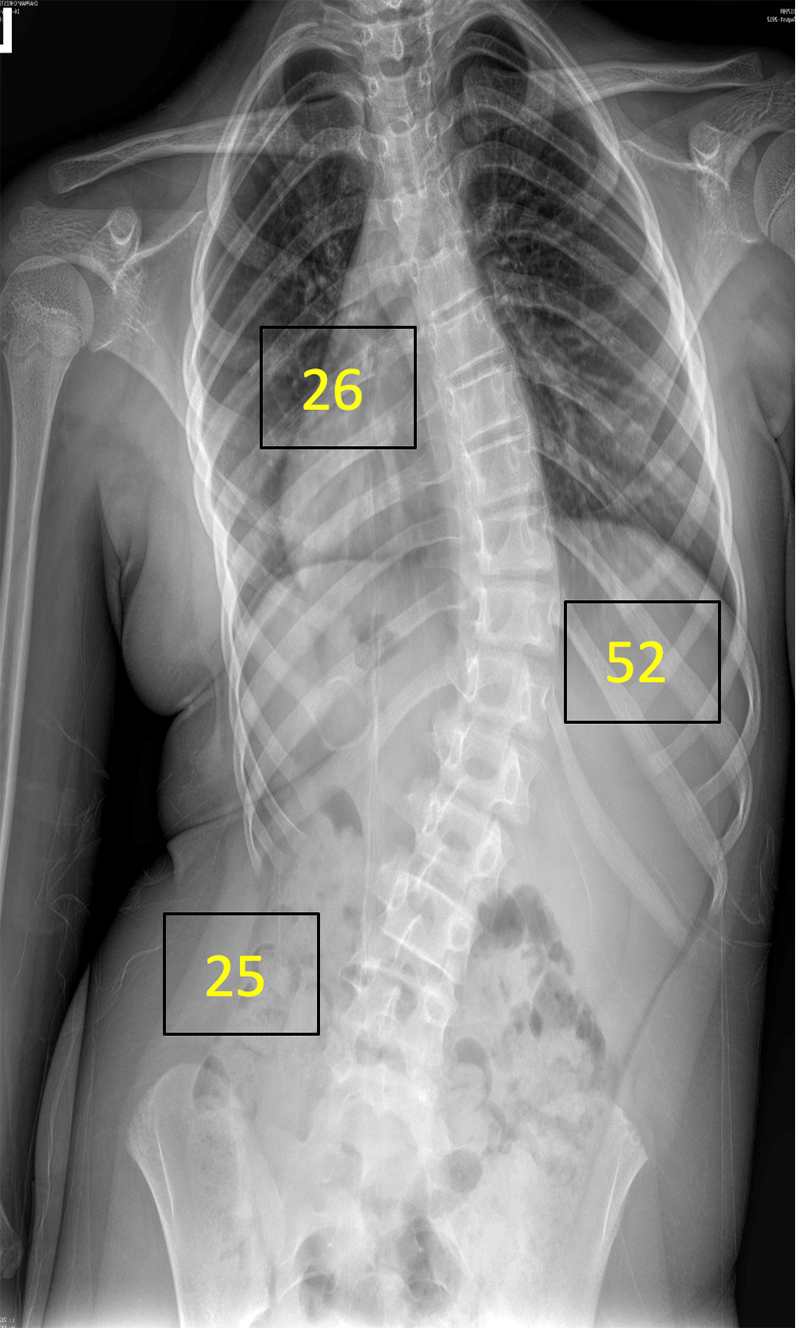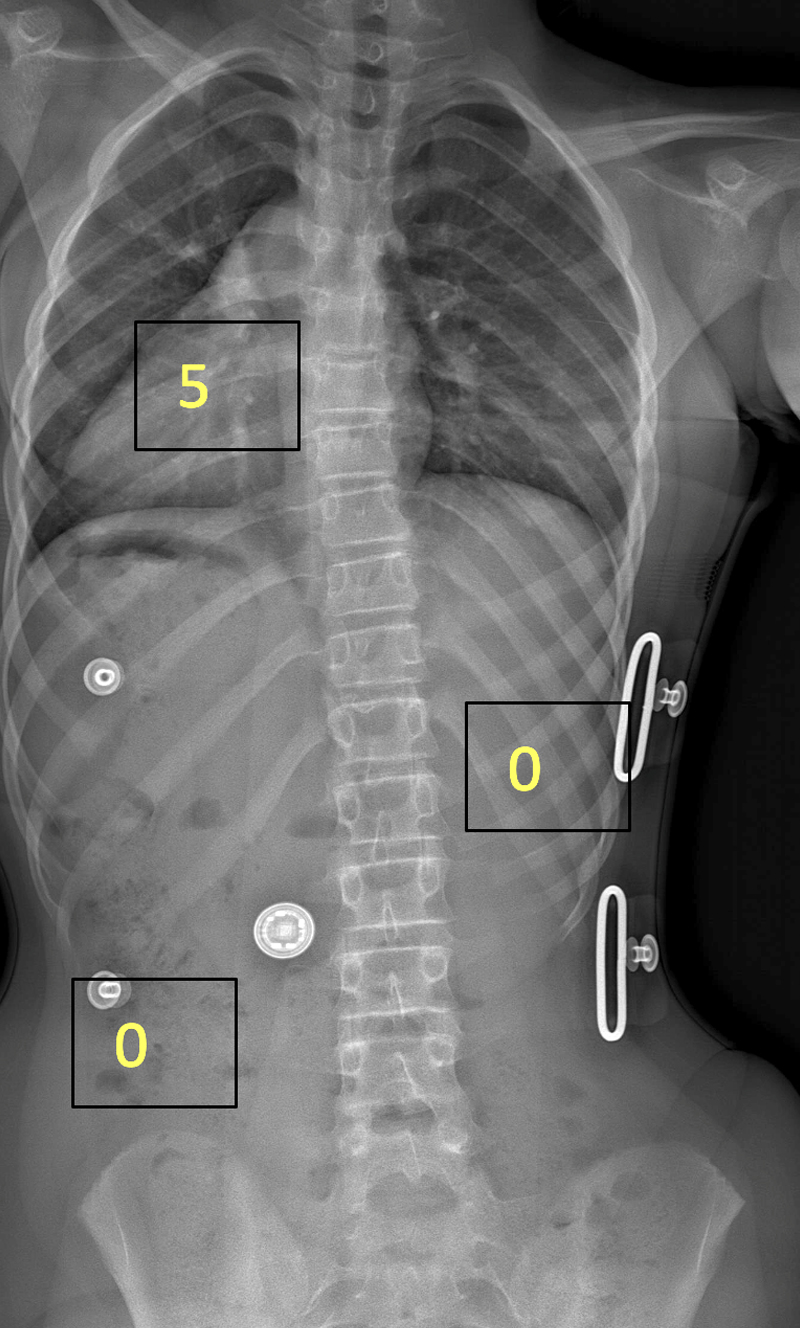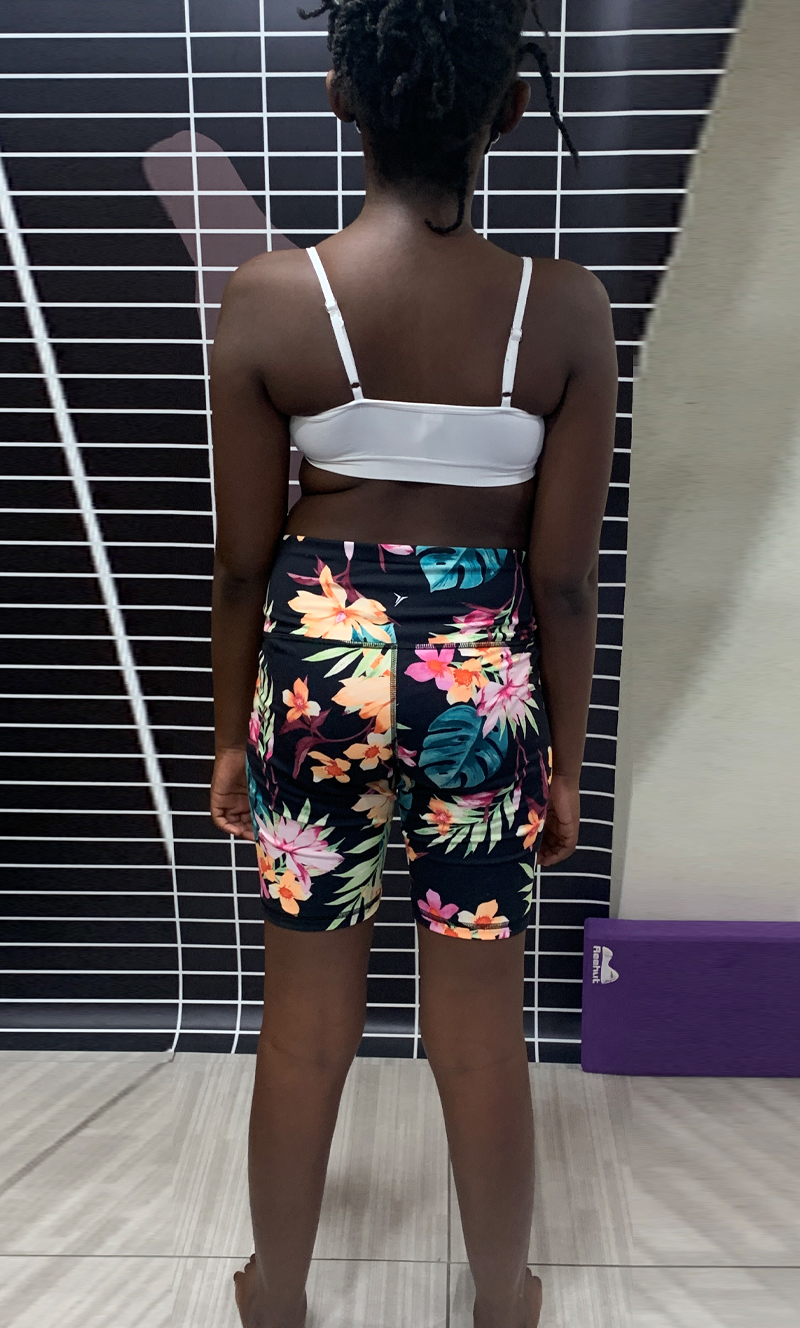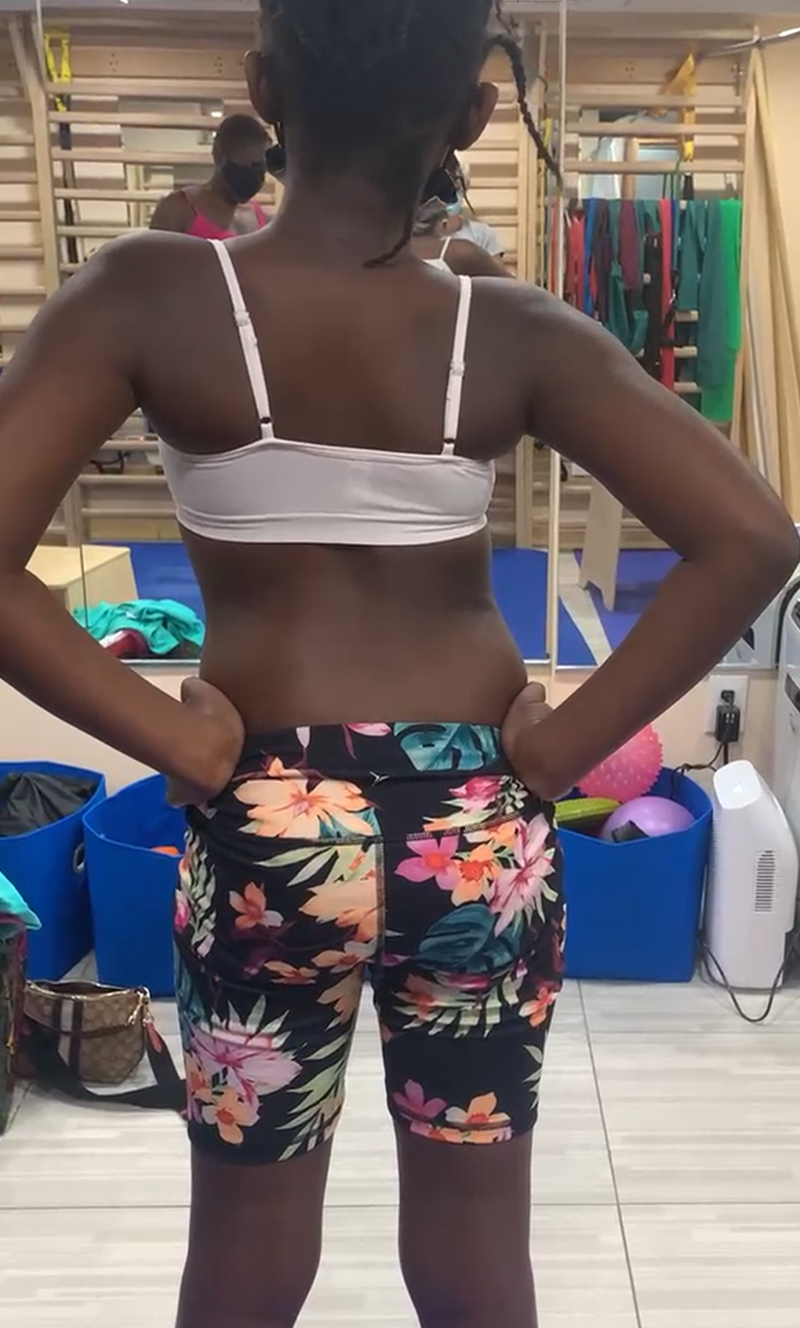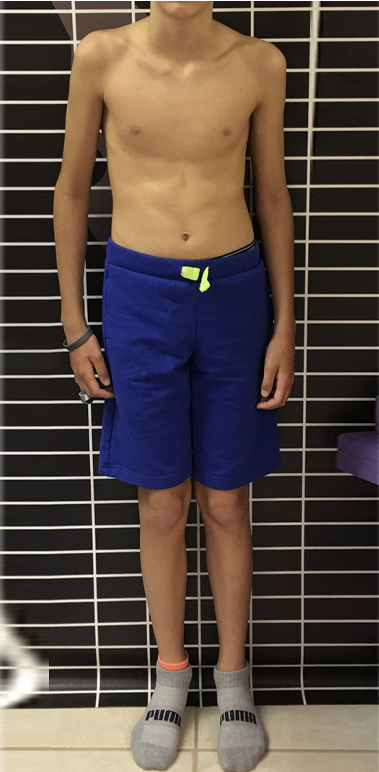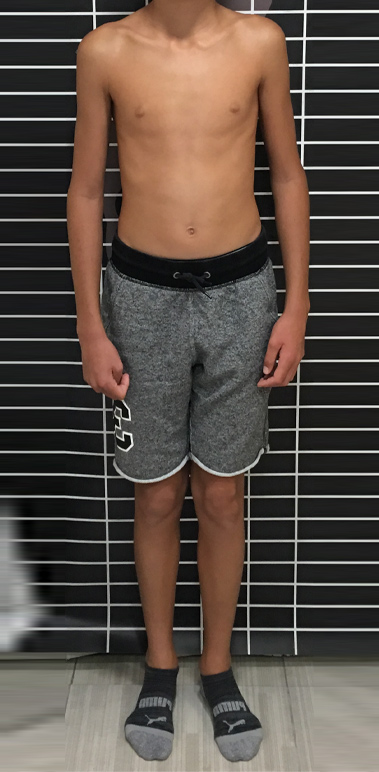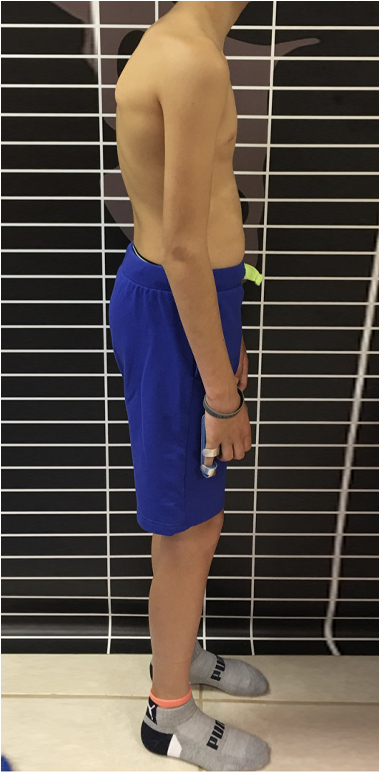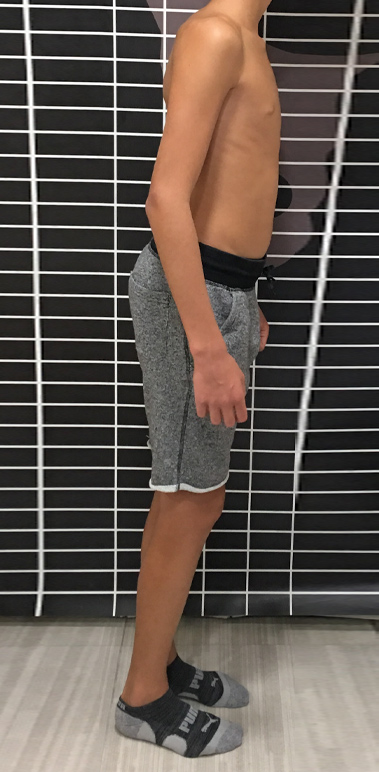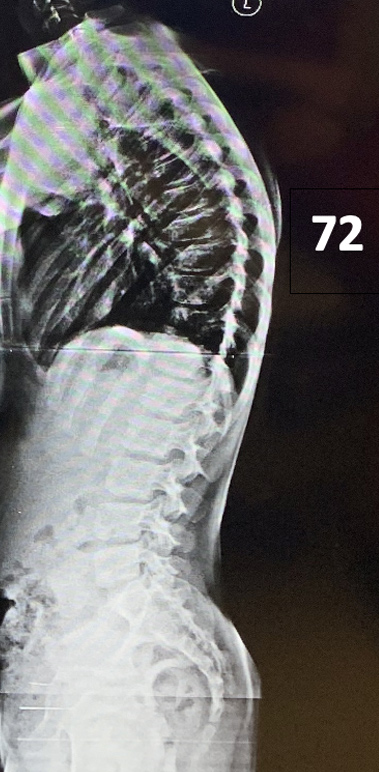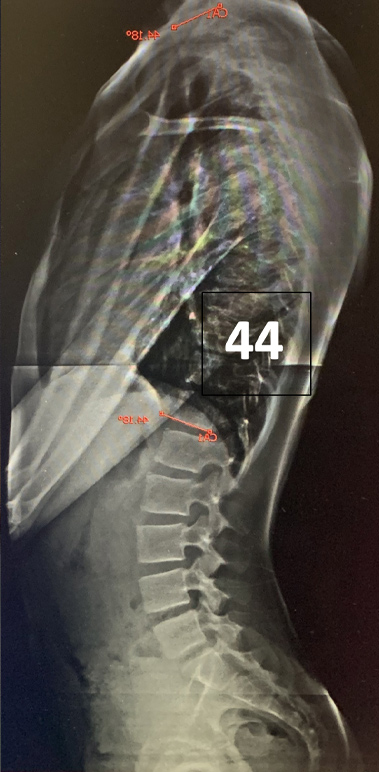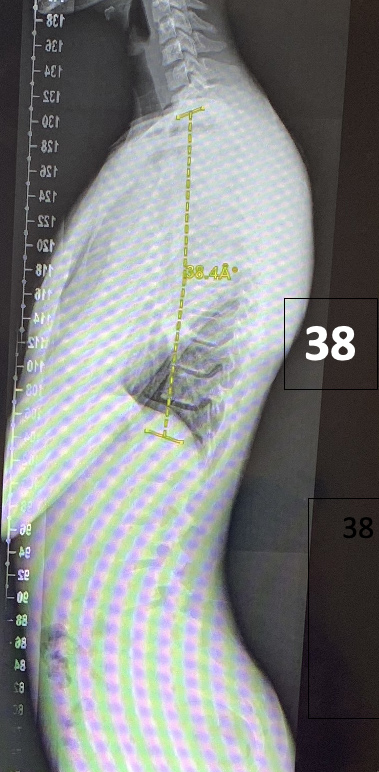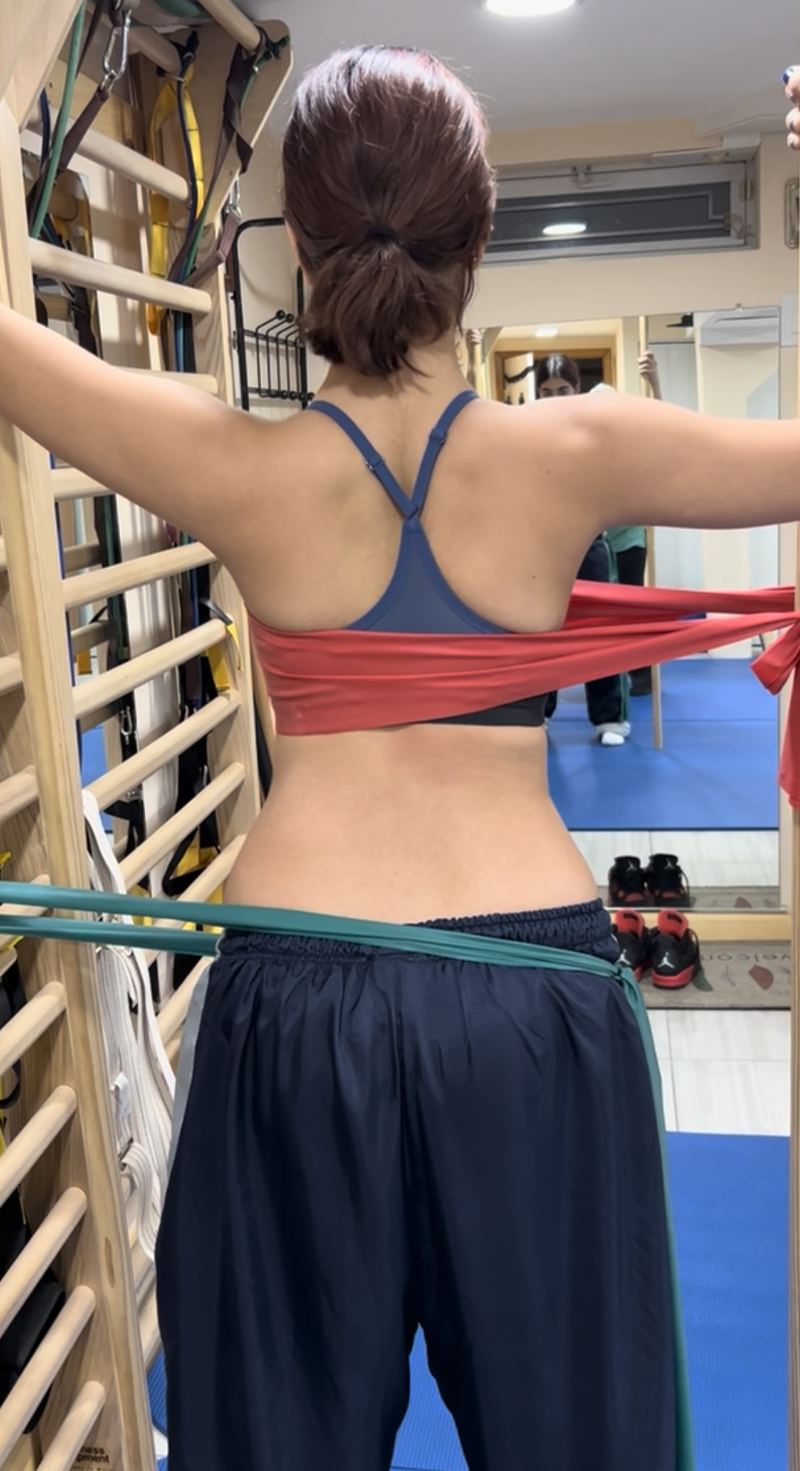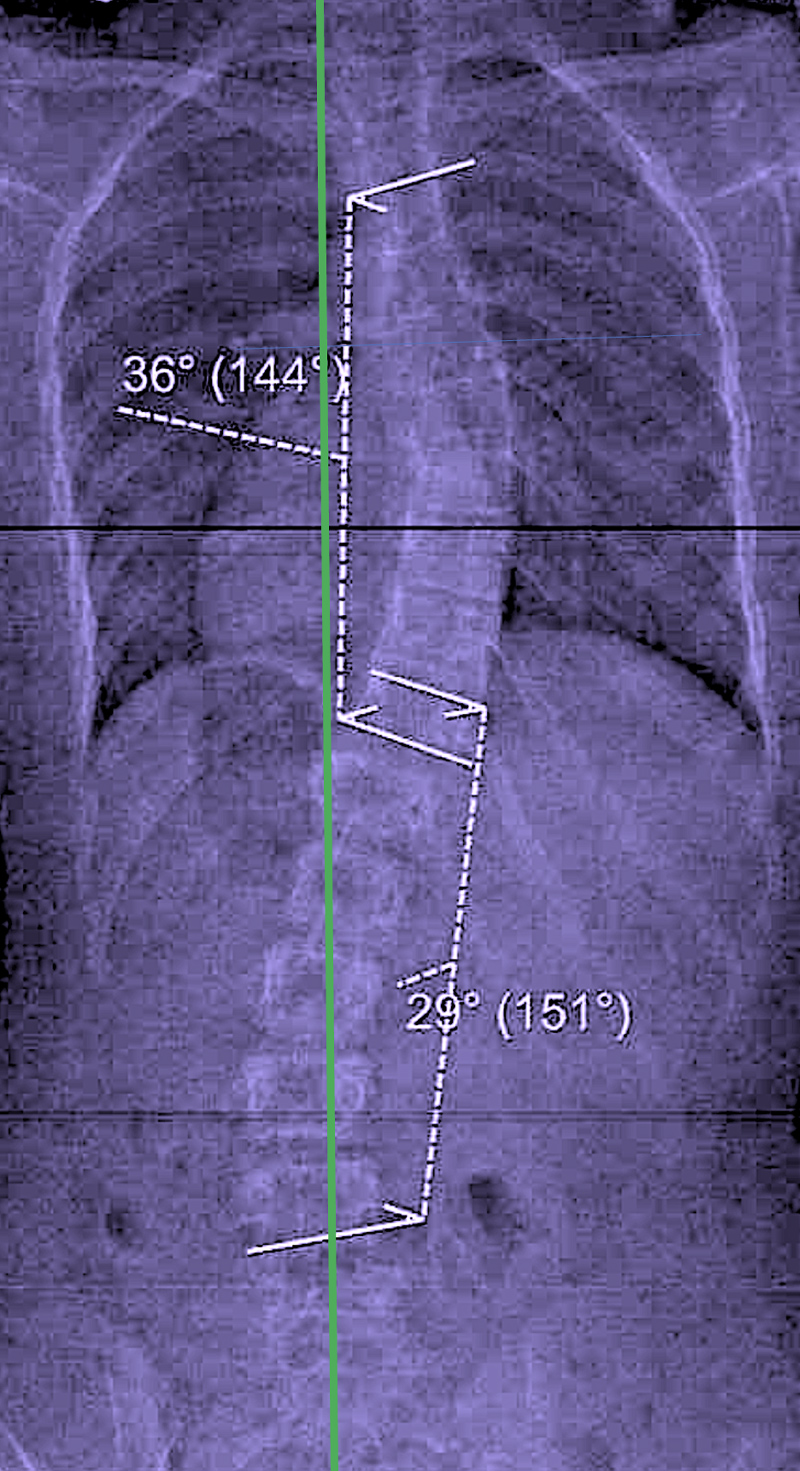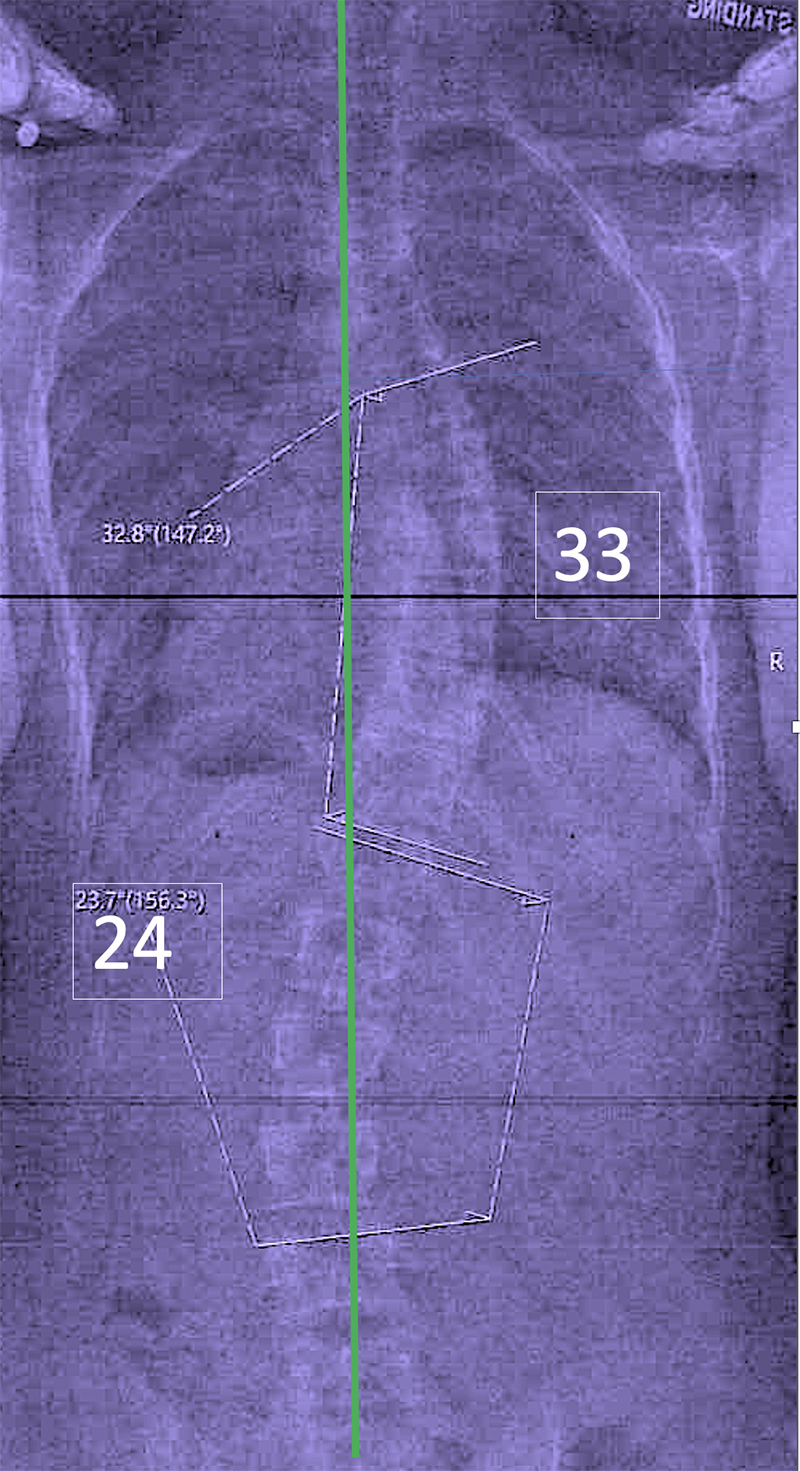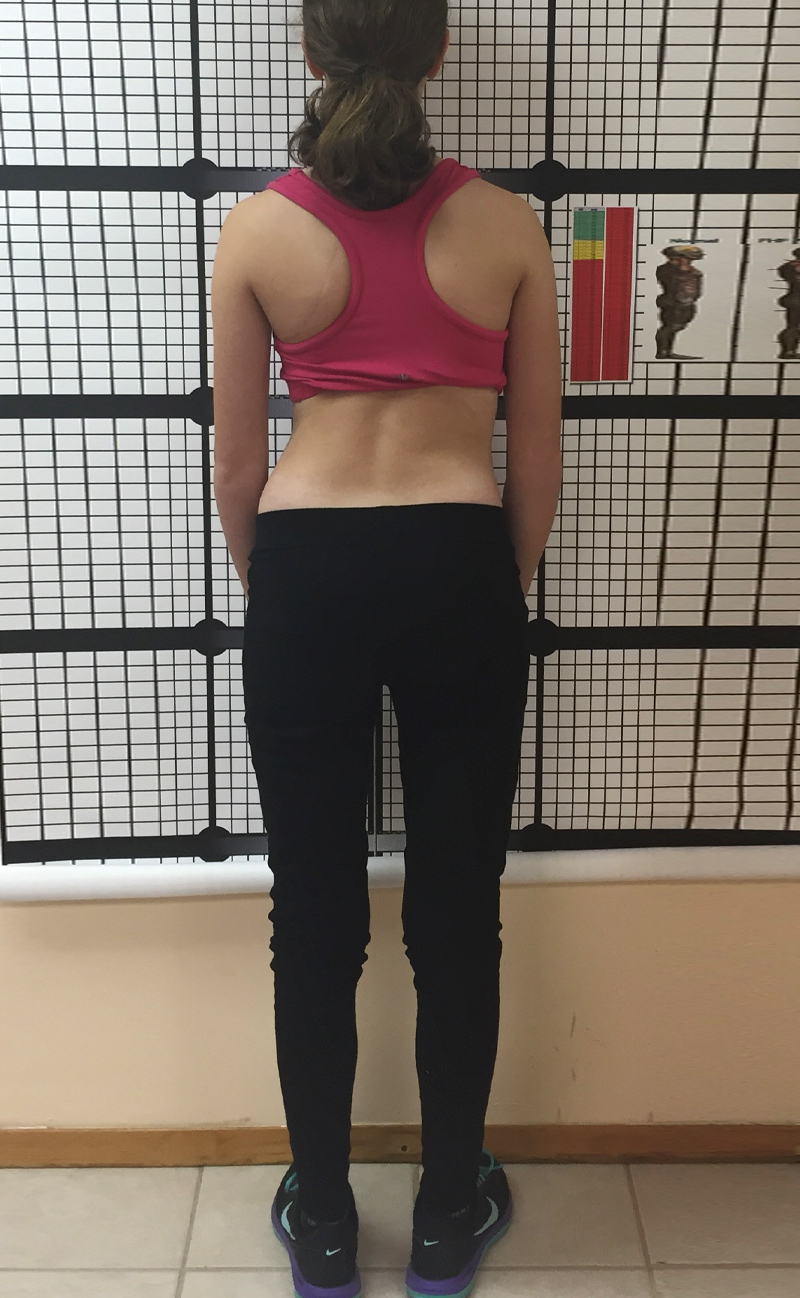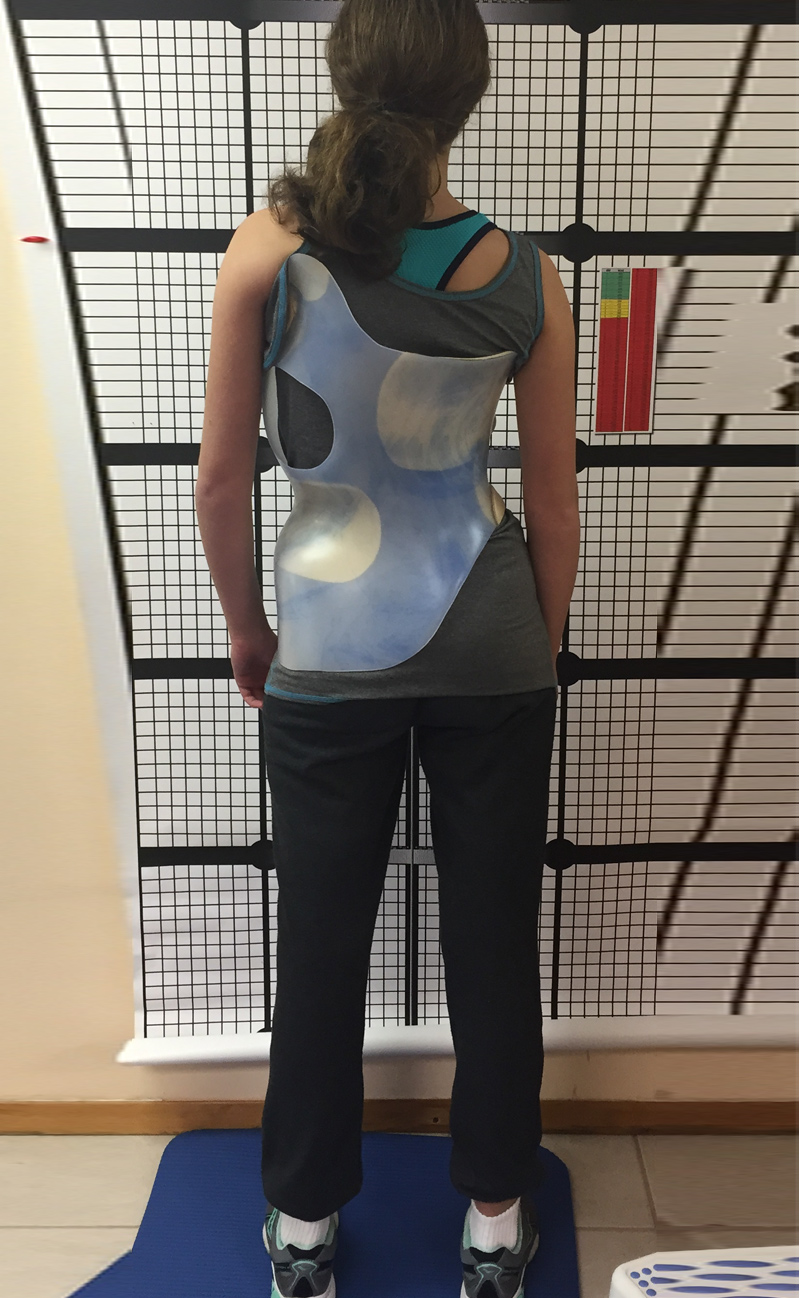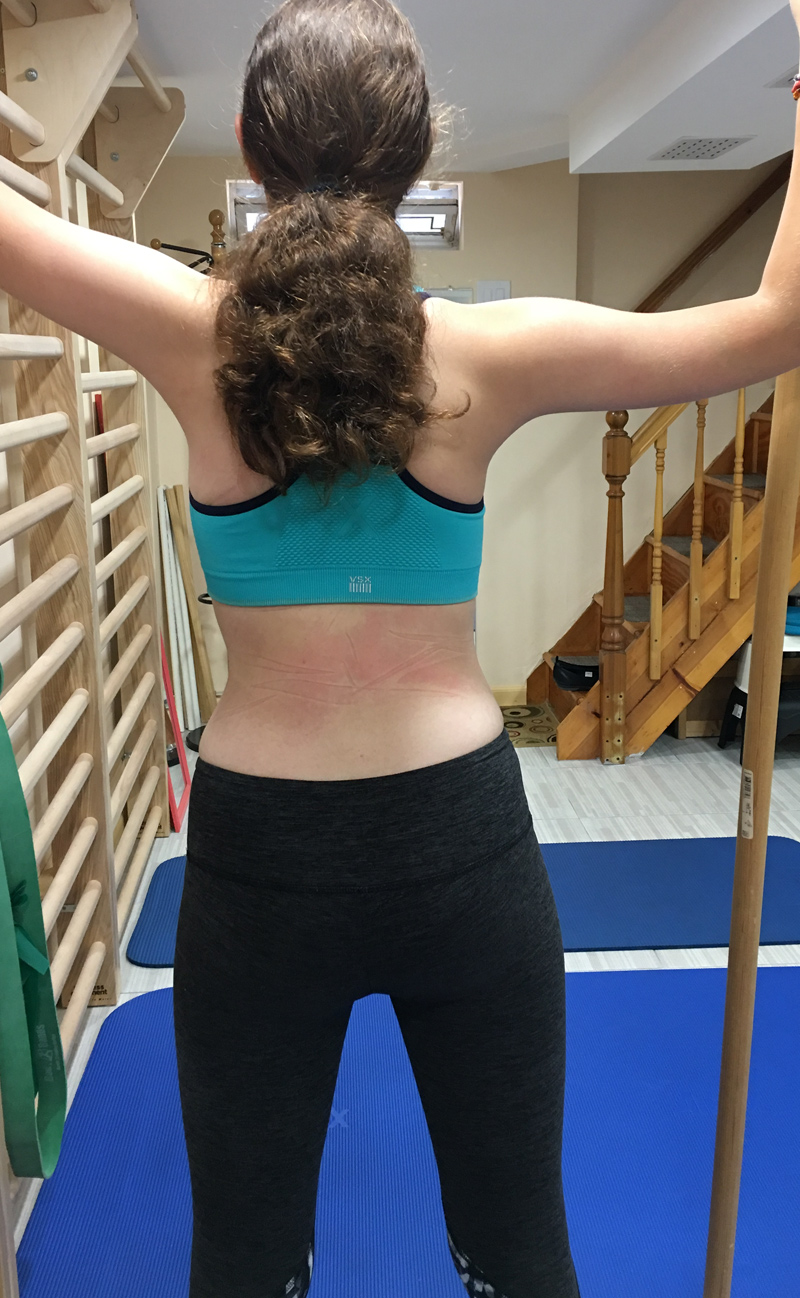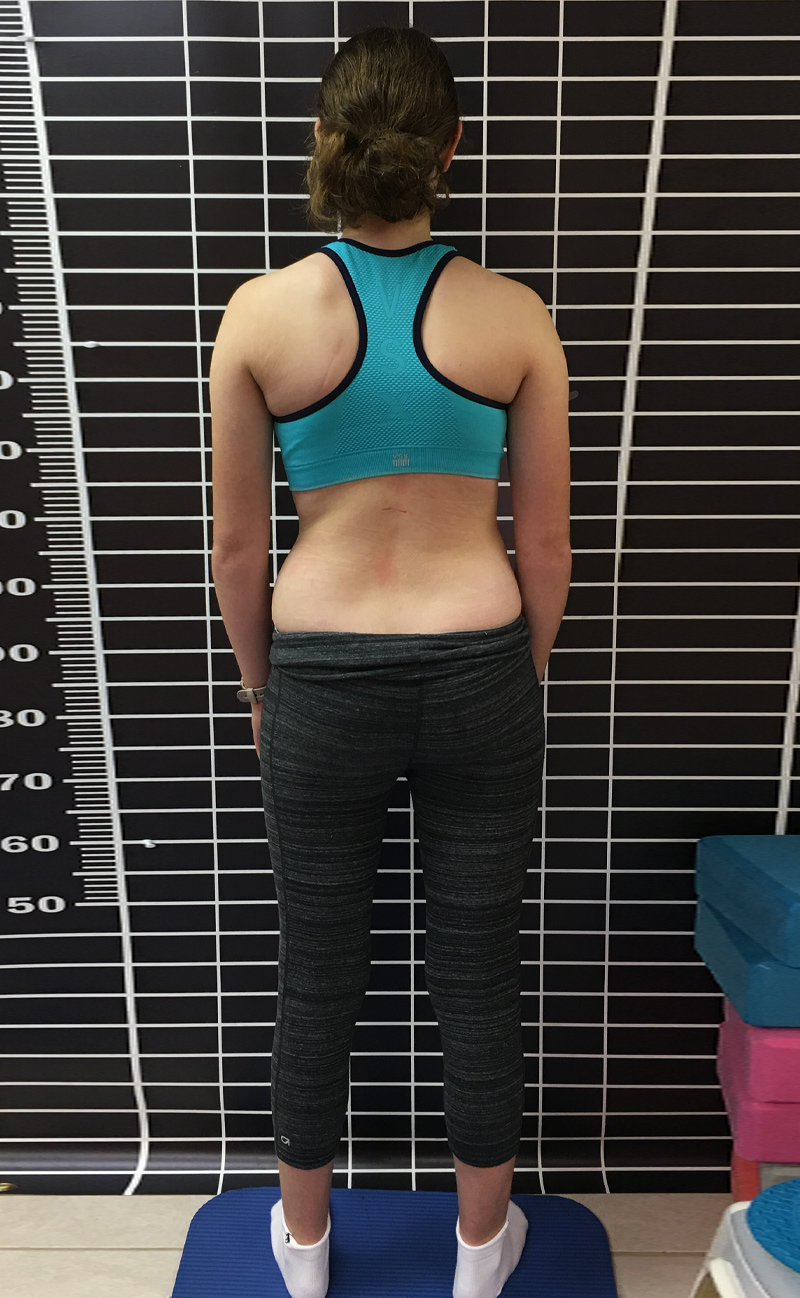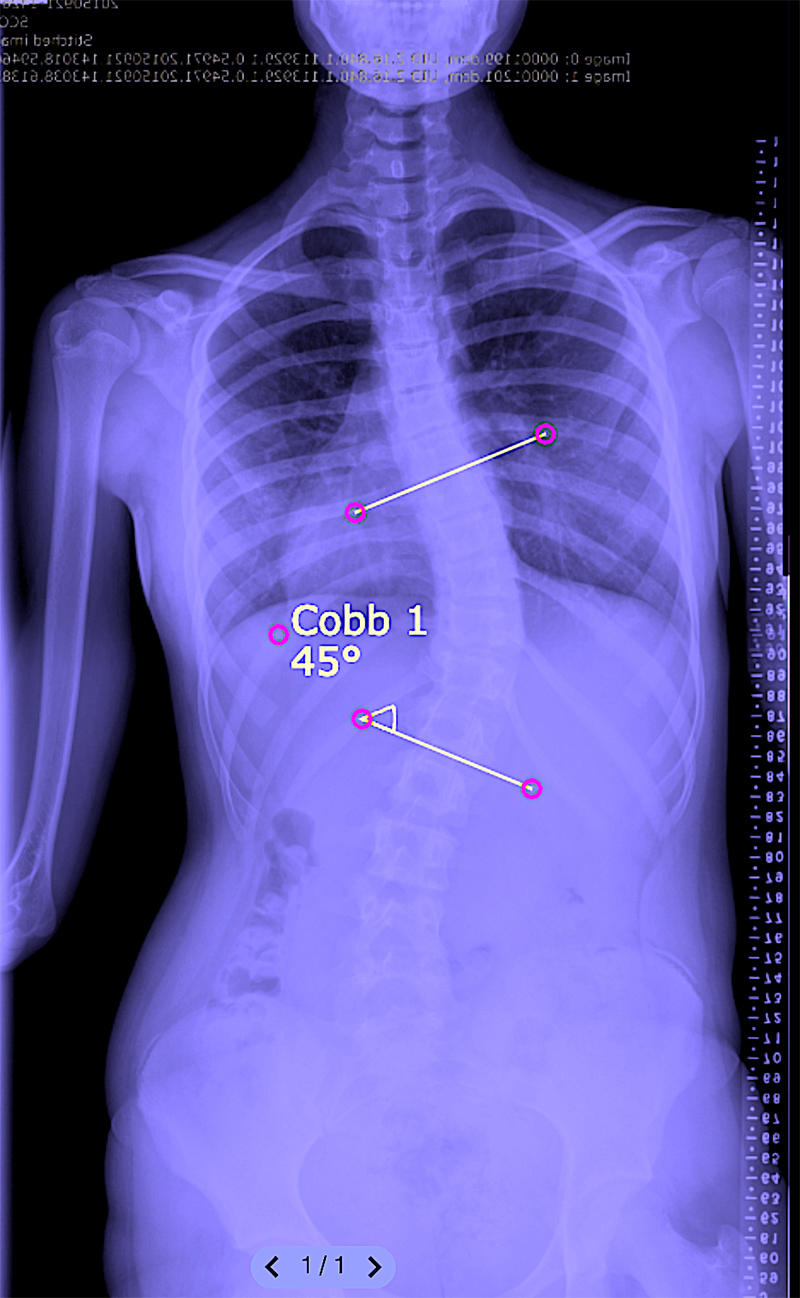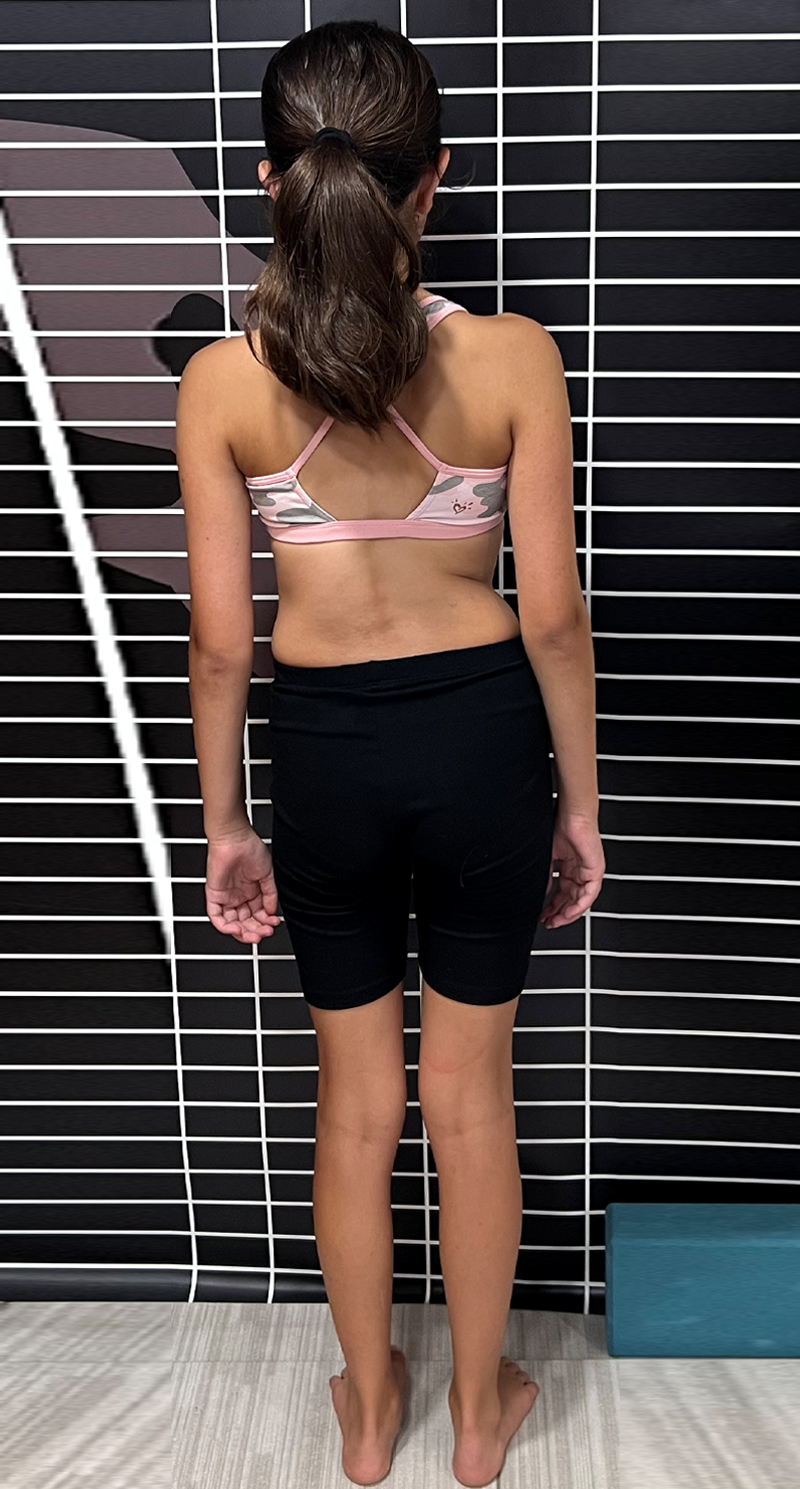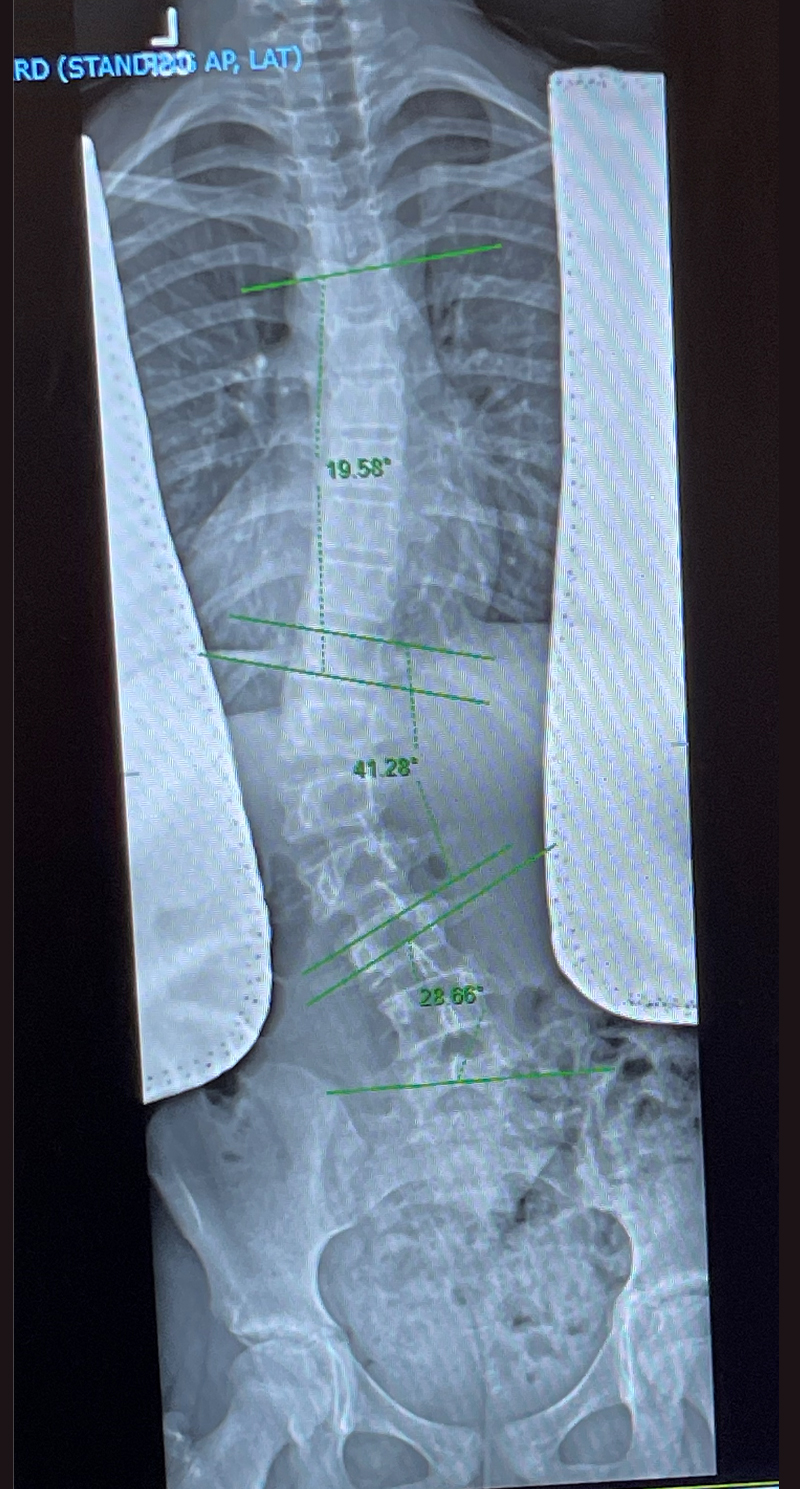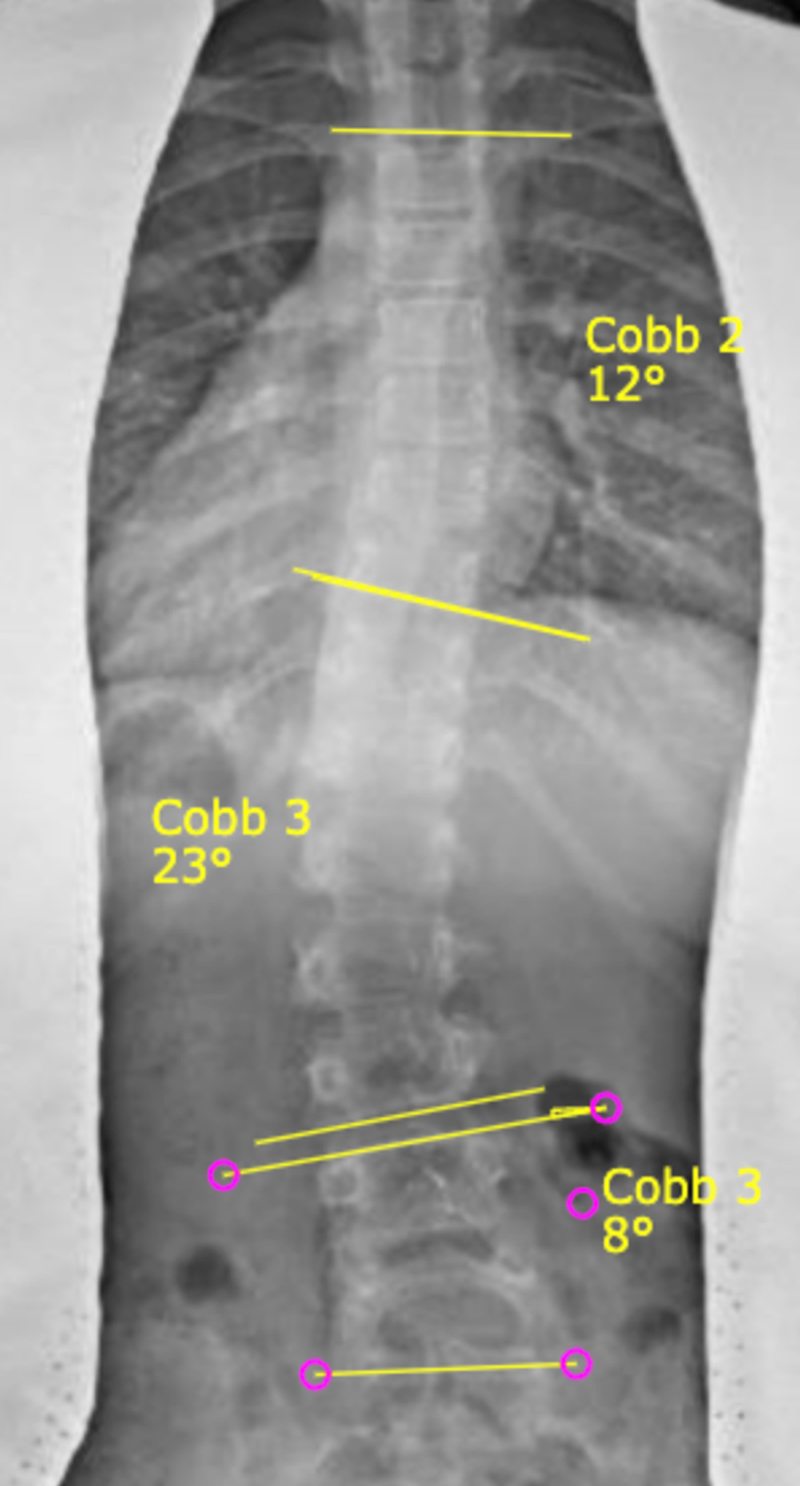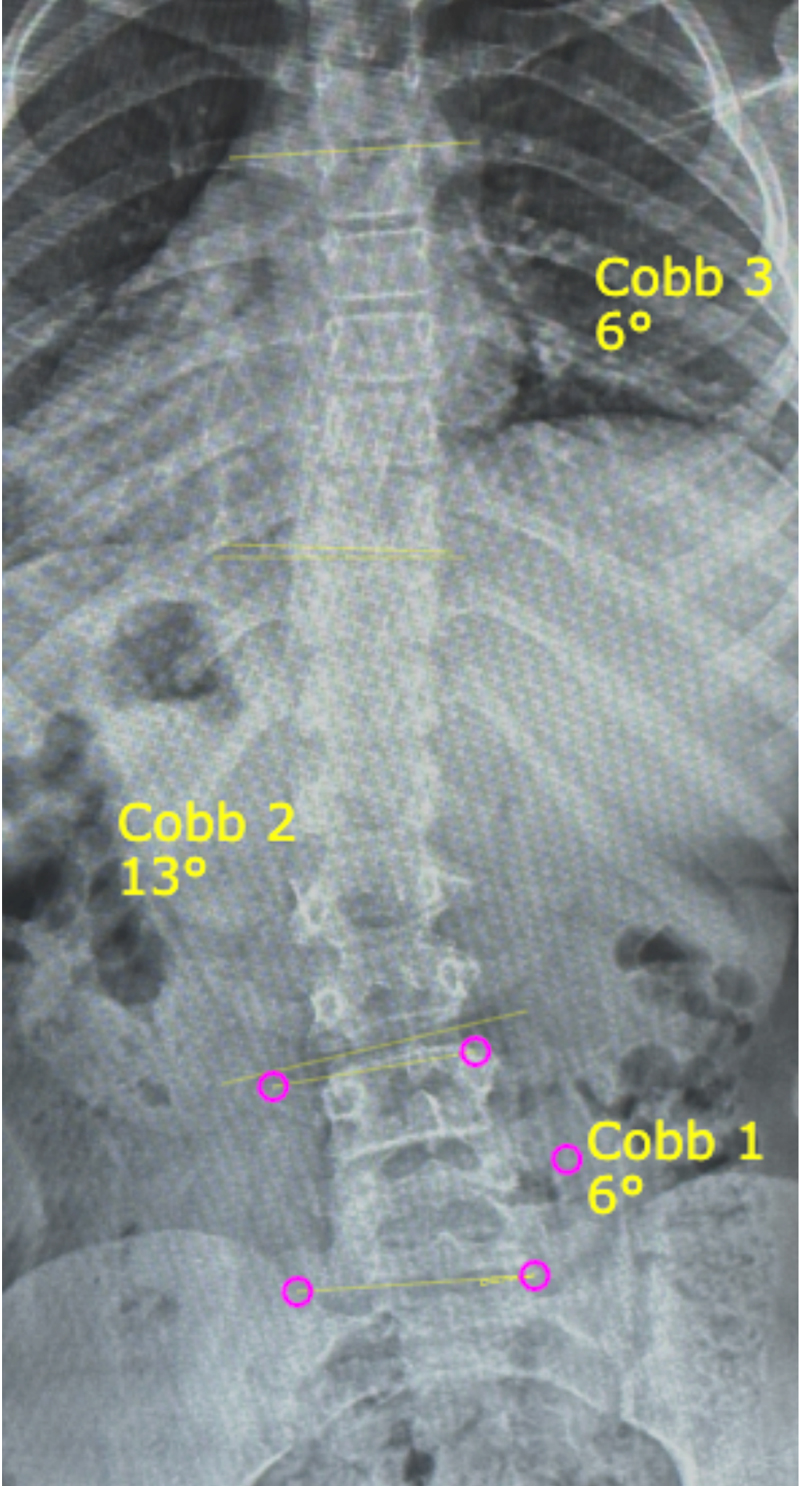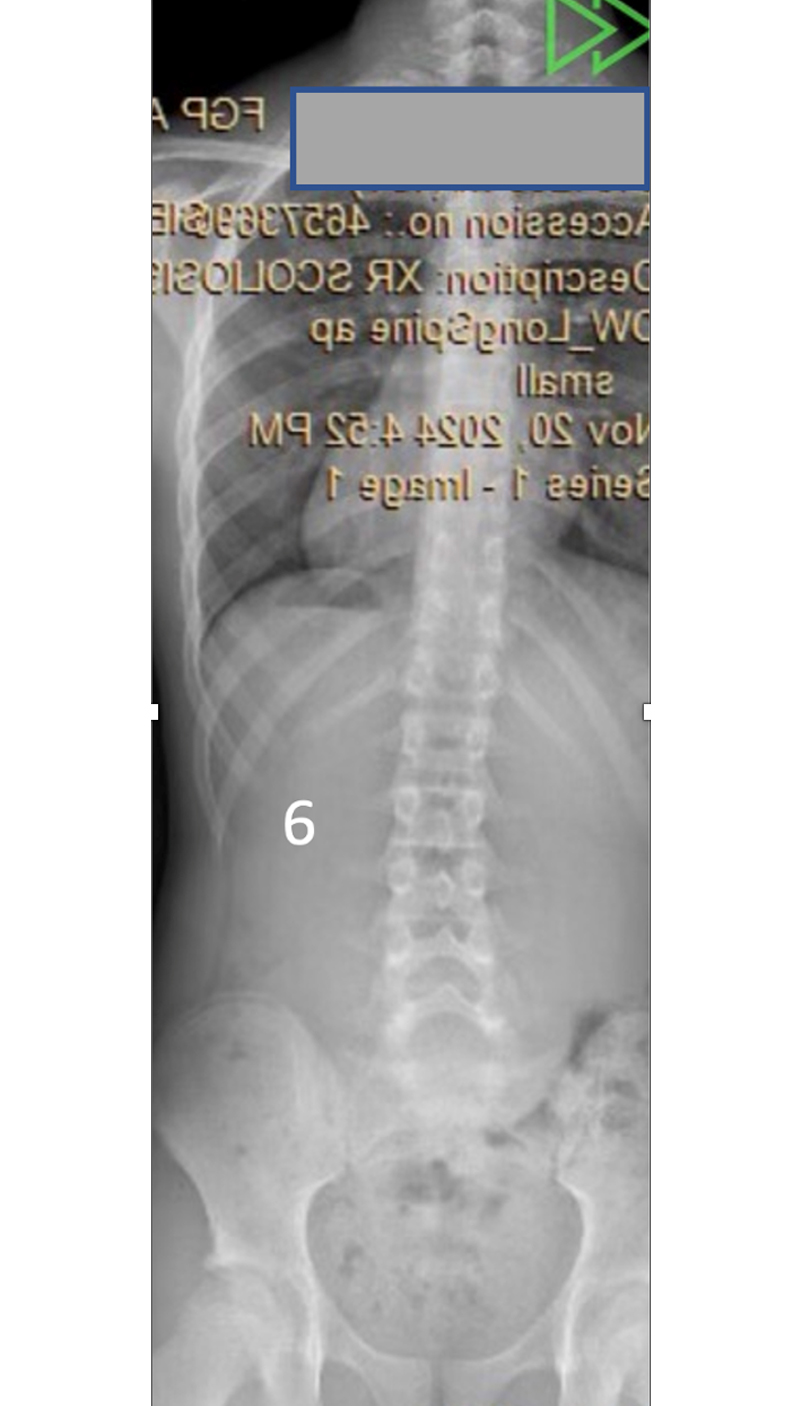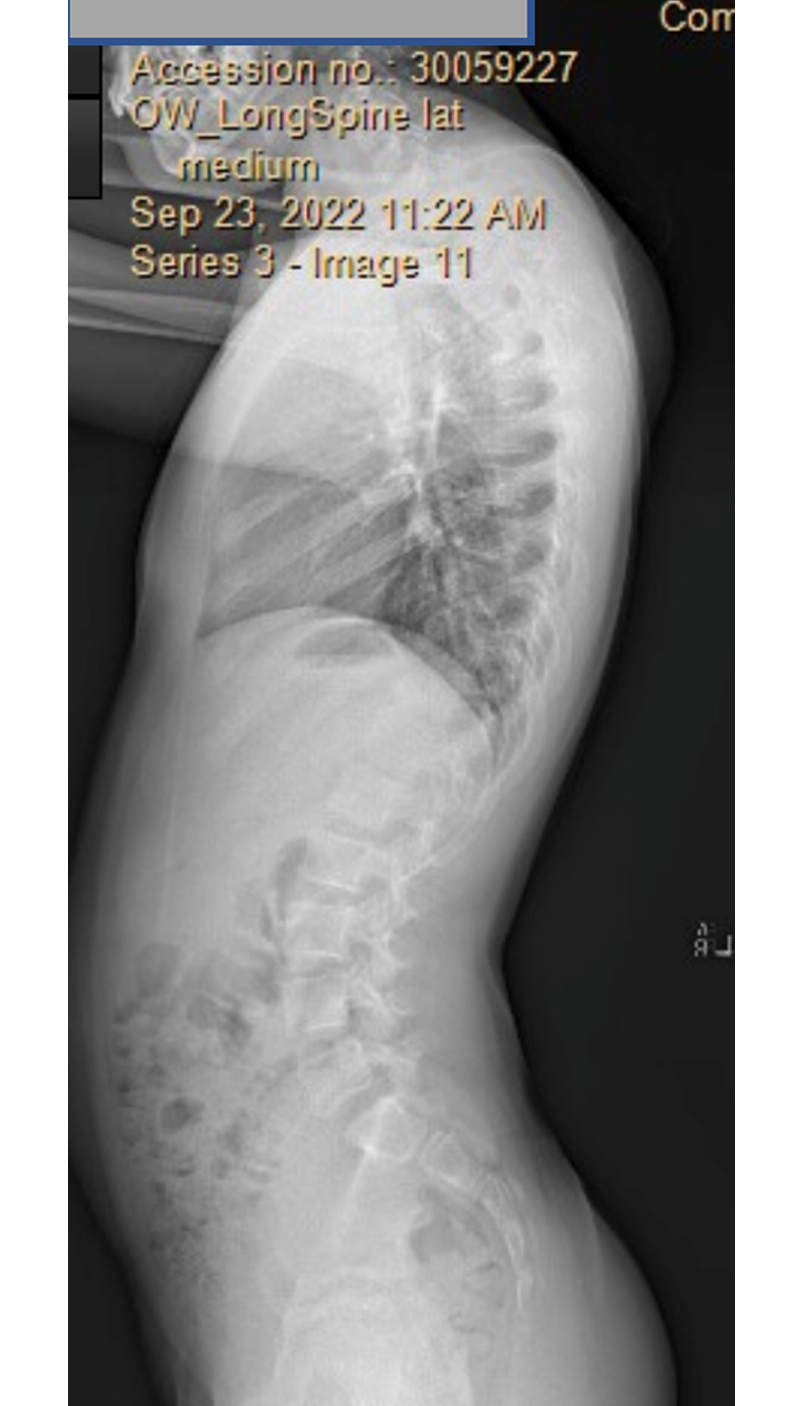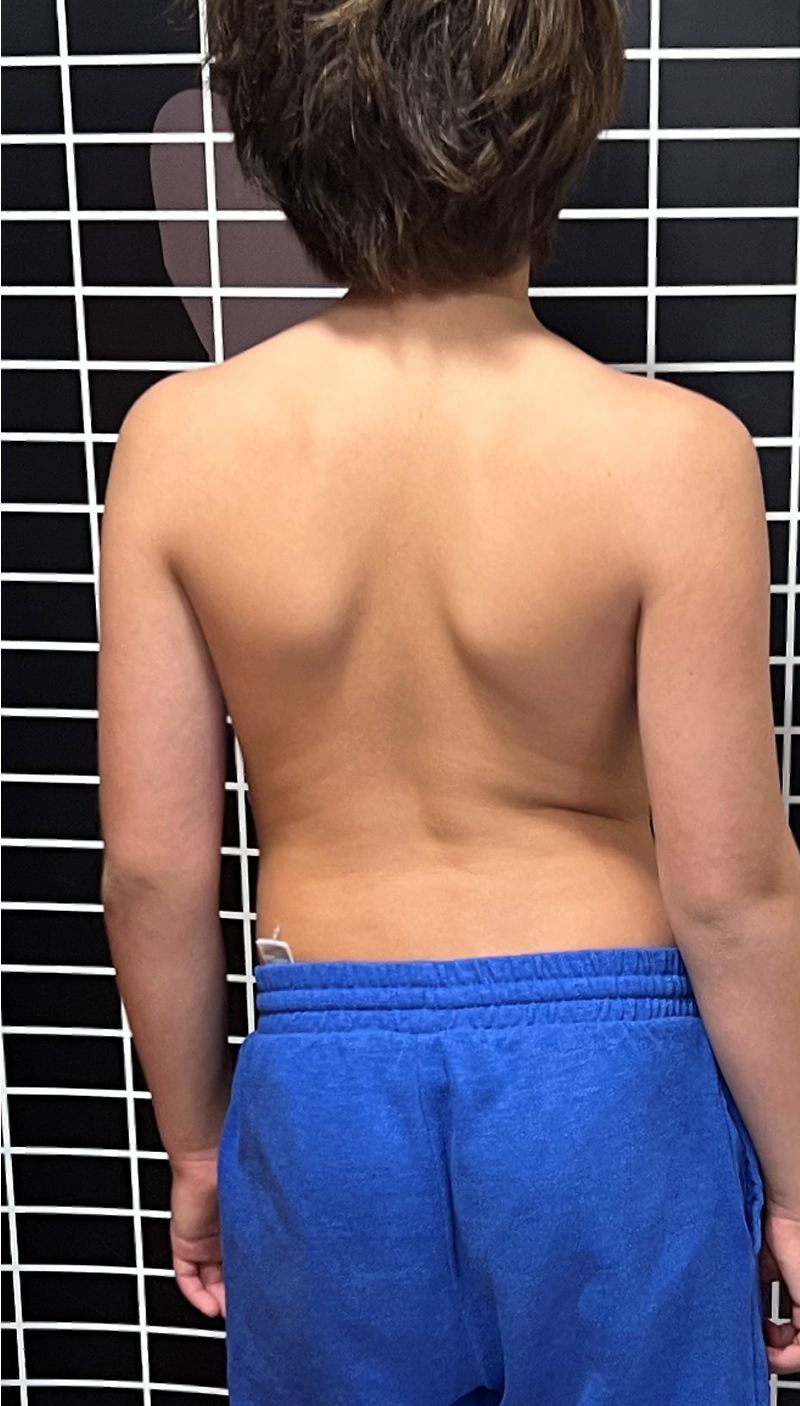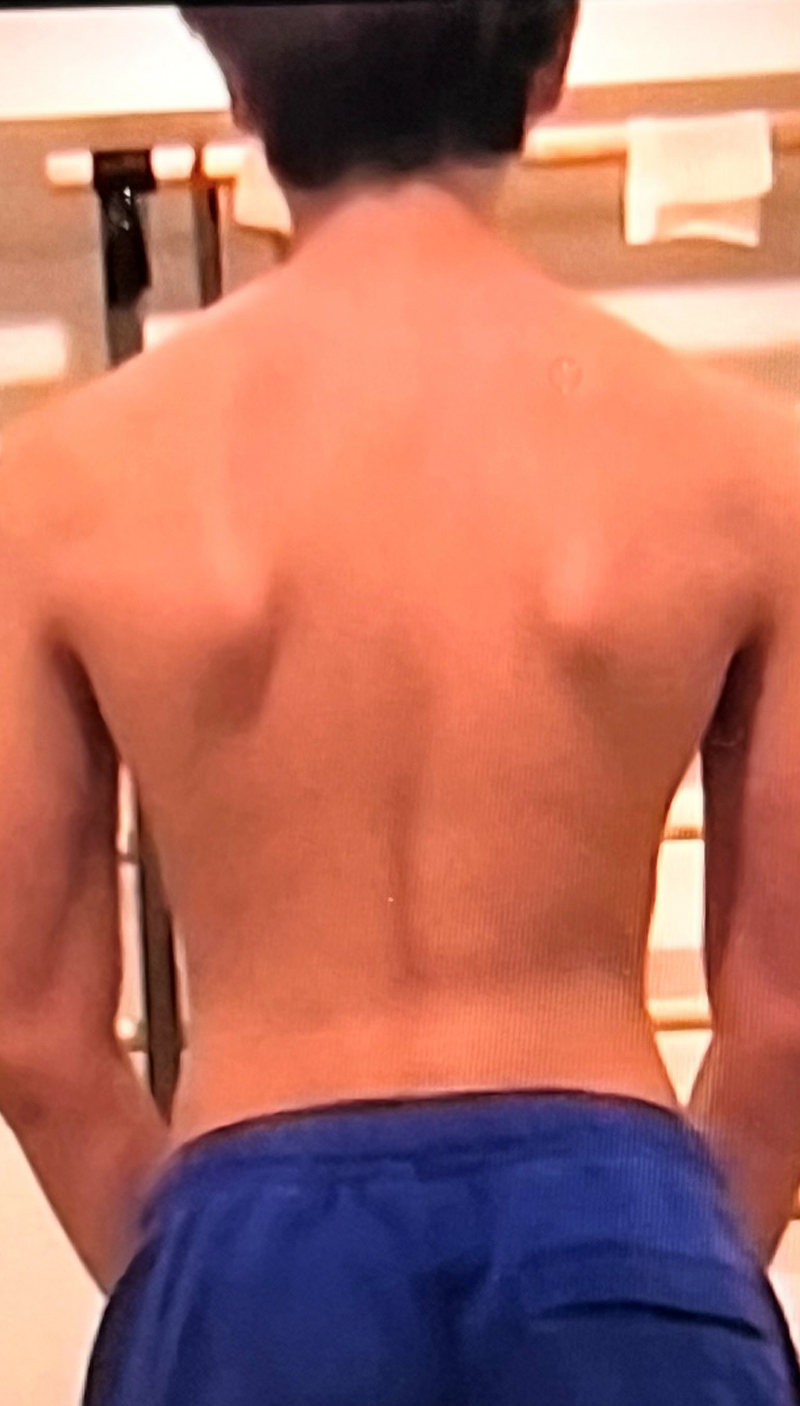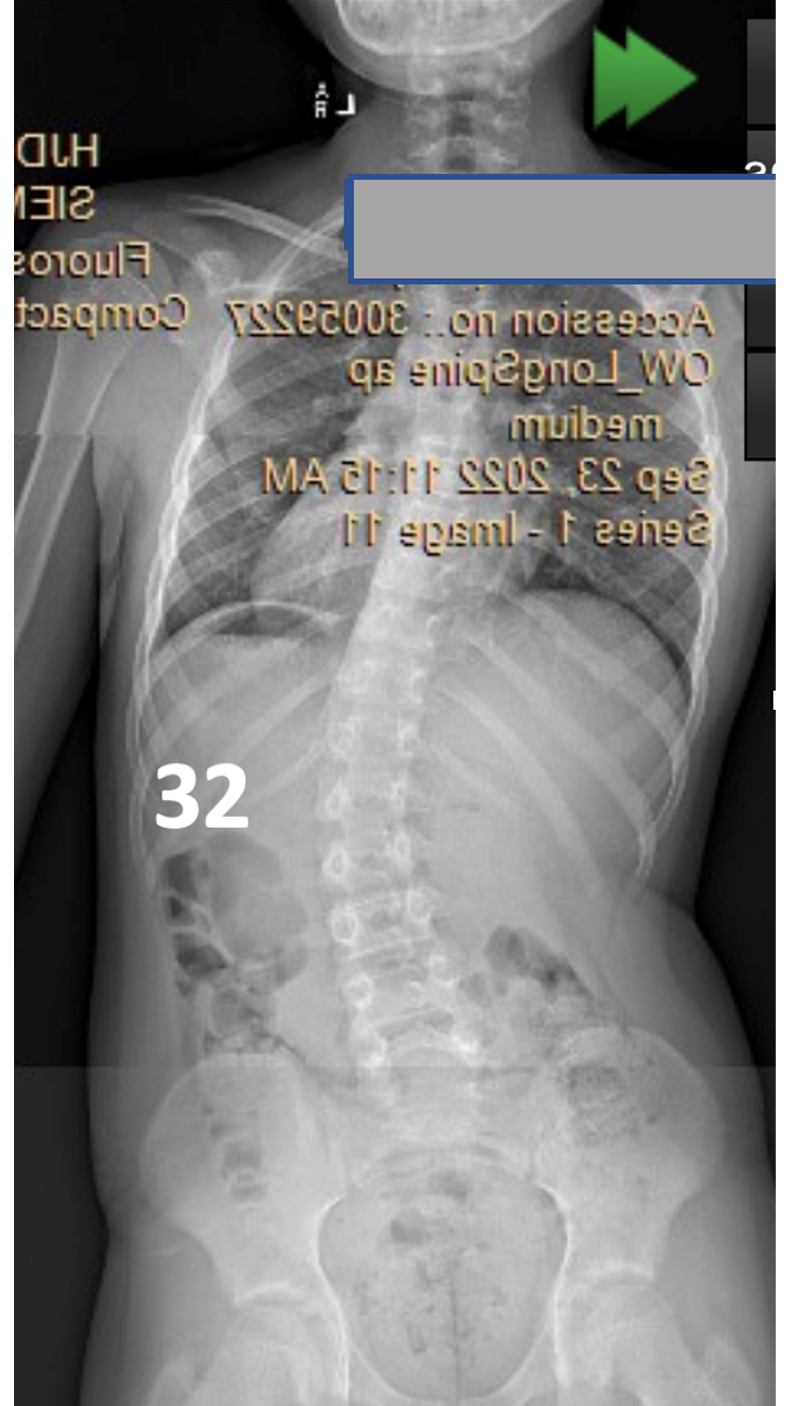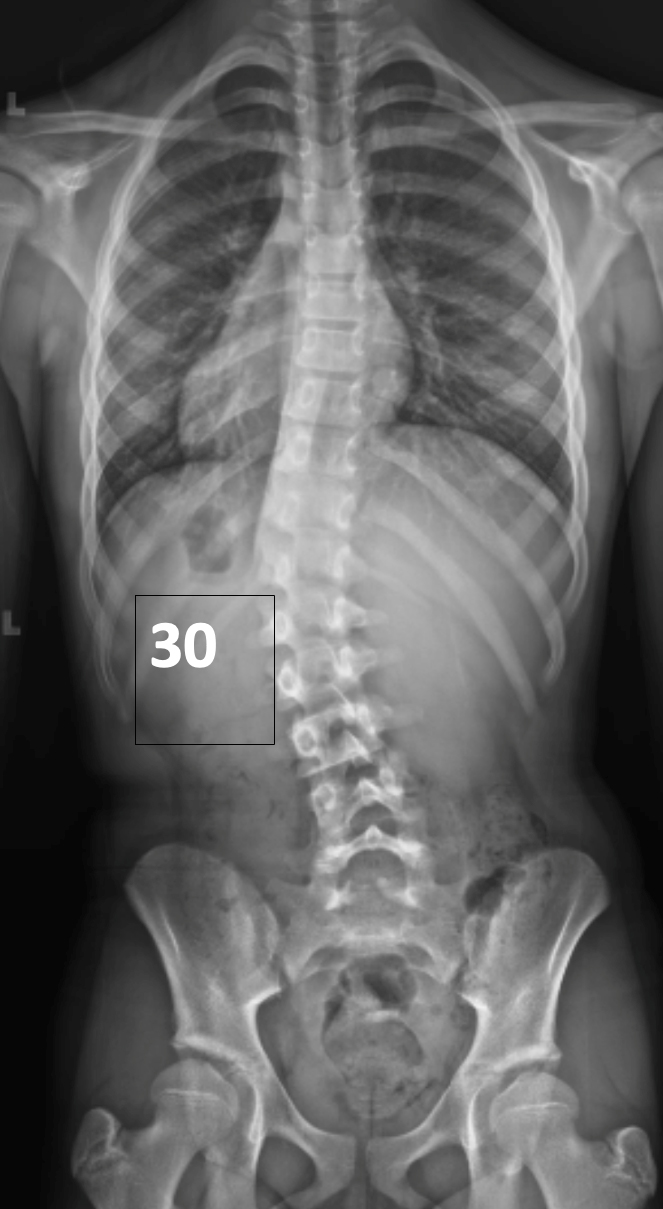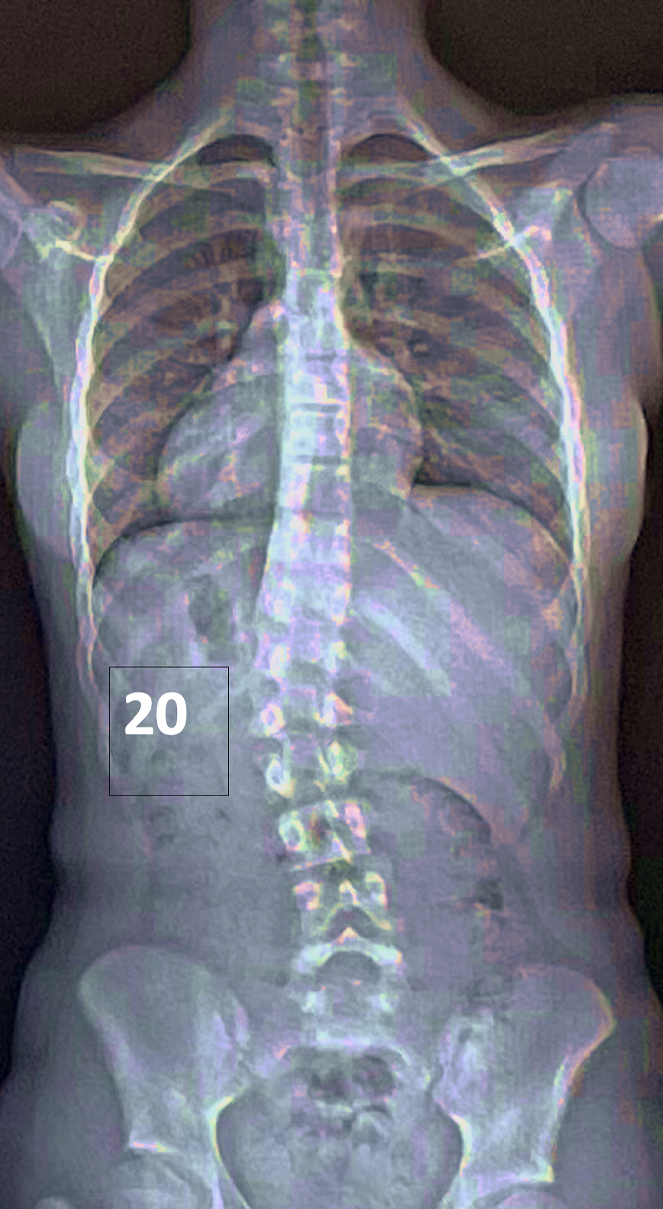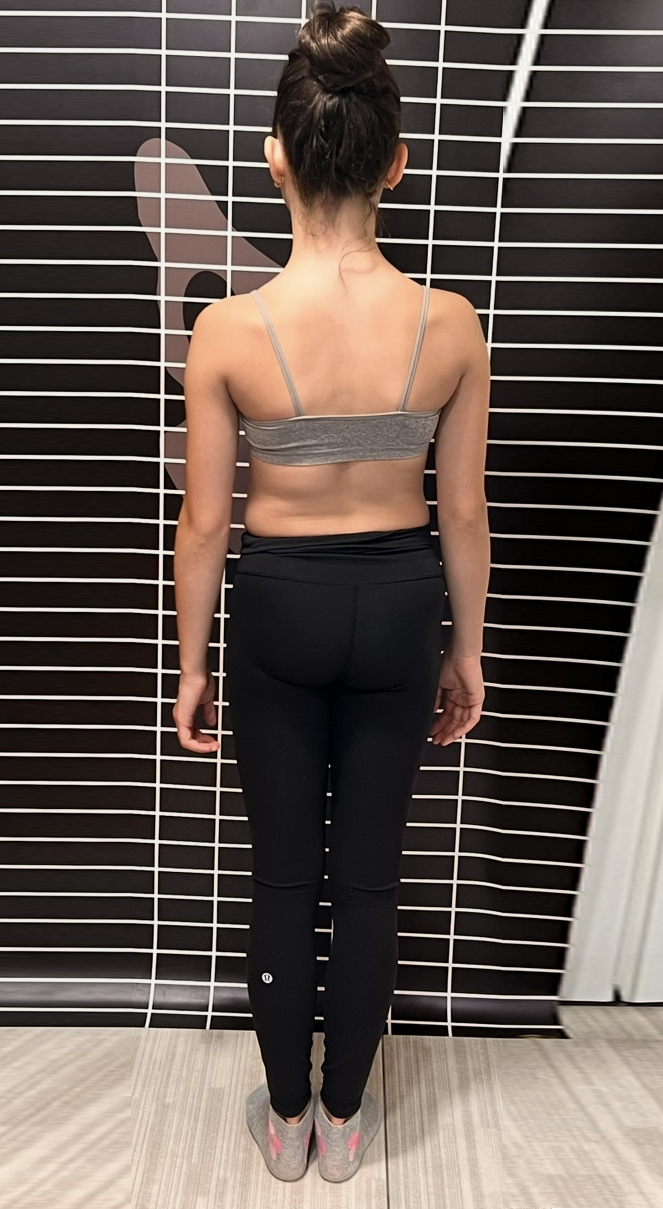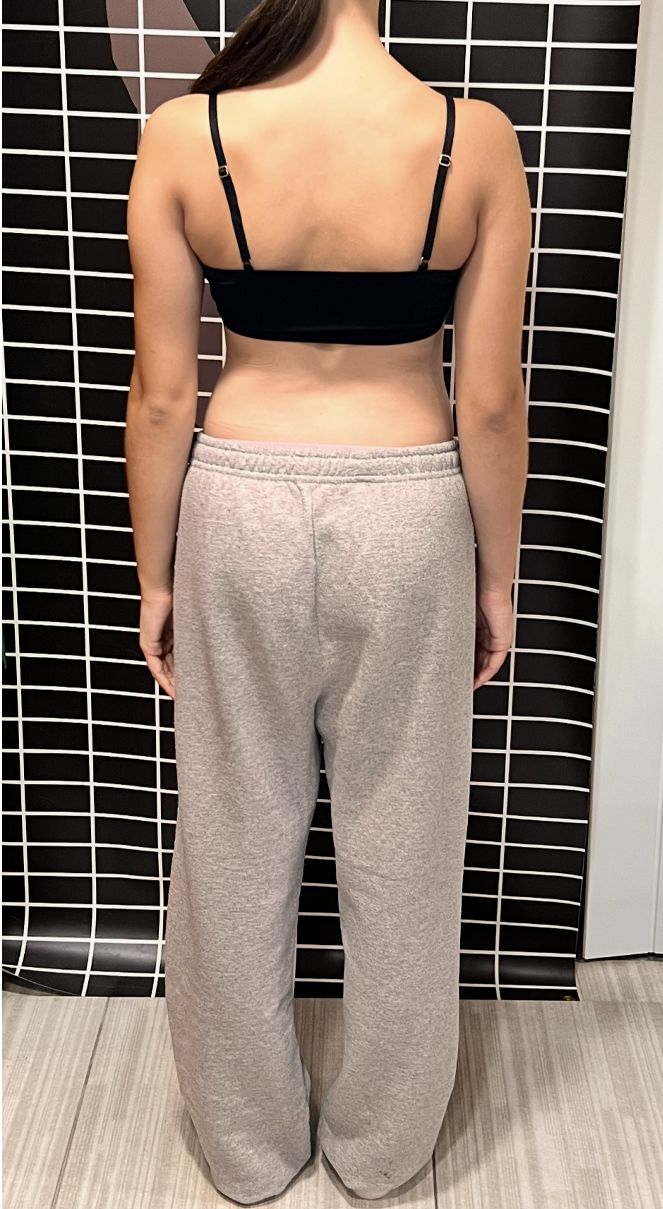CASE STUDIES
CASE 1 – Adolescent Idiopathic Scoliosis
significant Cobb angle reduction after treatment with WCR brace and scoliosis specific exercises (Schroth, SEAS)
CASE 2 – Kyphosis
postural improvement and kyphosis reduction with scoliosis specific exercises (Schroth, SEAS)
CASE 3 – Juvenile Scoliosis
significant Cobb angle reduction and stabilization at the end of growth after treatment with part time NYRC brace and scoliosis specific exercises delivered virtually (Schroth, SEAS, Lyon)
This case is a proof that virtual therapy can be highly effective and that bracing at the end of growth can be very helpful, even if it is administered at nighttime only.
CASE 4 – Juvenile scoliosis
Cobb angle reduction with scoliosis specific exercises (Schroth, SEAS). Bracing avoided
Towards the end of treatment, the curve gradually progressed to the numbers that were close to initial diagnosis, but it never exceeded it. Surgery was prevented and bracing was completely avoided. The patient was happy and satisfied with treatment outcome.
CASE 5 – Adolescent Idiopathic Scoliosis
complete resolution with scoliosis specific exercises (Schroth, SEAS)
CASE 6 – Adolescent Idiopathic Scoliosis
Cobb angle reduction and stabilization after treatment with NYRC brace and scoliosis specific exercises (Schroth, SEAS, Lyon)
CASE 7 – Adolescent Idiopathic Scoliosis
significant Cobb angle reduction after treatment with WCR brace and scoliosis specific exercises (Schroth, SEAS, Lyon)
CASE 8 – Juvenile Scoliosis
resolution of severe scoliosis after treatment with NYRC brace and scoliosis specific exercises (Schroth, SEAS)
Why this case was so successful?
- Young age, good flexibility and excellent in brace correction
- Excellent brace compliance
- Good therapy effort initially
- Good physical fitness effort to support bracing
CASE 9 – Adolescent kyphosis resolution
after treatment with nighttime brace and scoliosis specific exercises (Schroth, SEAS)
CASE 10 – Juvenile scoliosis
reduction and stabilization at the end of growth with night brace and scoliosis specific exercises (Schroth, SEAS, Lyon)
CASE 11 – Adolescent idiopathic scoliosis
reduction after treatment with NYRC brace and scoliosis specific exercises (Schroth, SEAS)
CASE 12 – Adolescent Idiopathic Scoliosis
significant reduction and stabilization after treatment with WCR brace and scoliosis specific exercises (Schroth, SEAS, Lyon)
CASE 13 – Juvenile Scoliosis
Cobb angle reduced and bracing avoided with scoliosis specific exercises (Schroth, Lyon)
CASE 14 – Adolescent Scoliosis
Cobb angle reduction after 2 years of treatment with NYRC brace and scoliosis specific exercises (Schroth, Lyon, SEAS)
There was almost complete resolution of the spinal curvature that appeared stable at 2 years after beginning of treatment.
